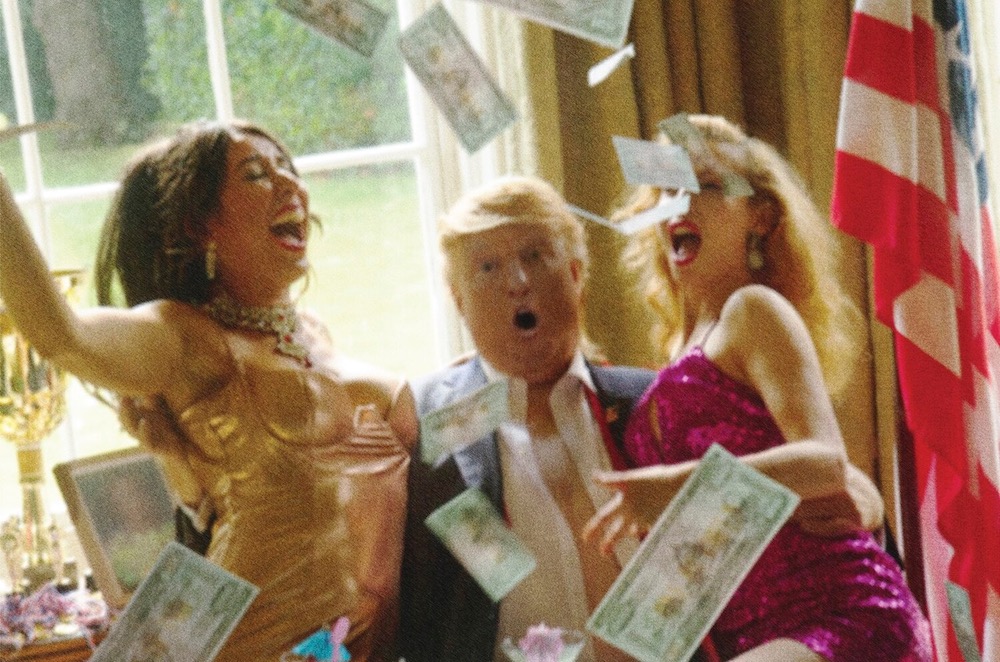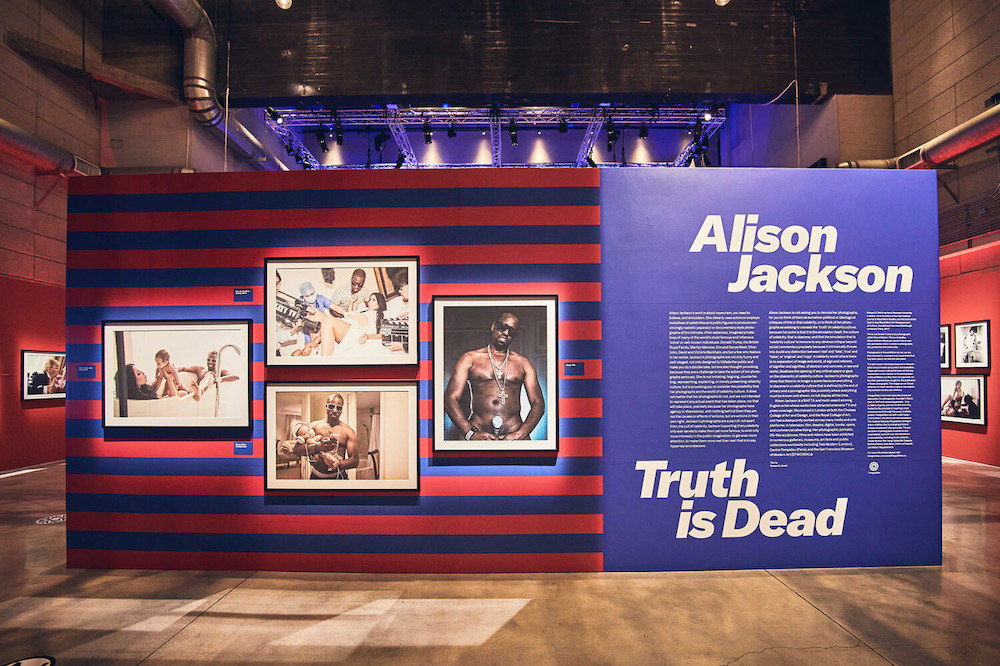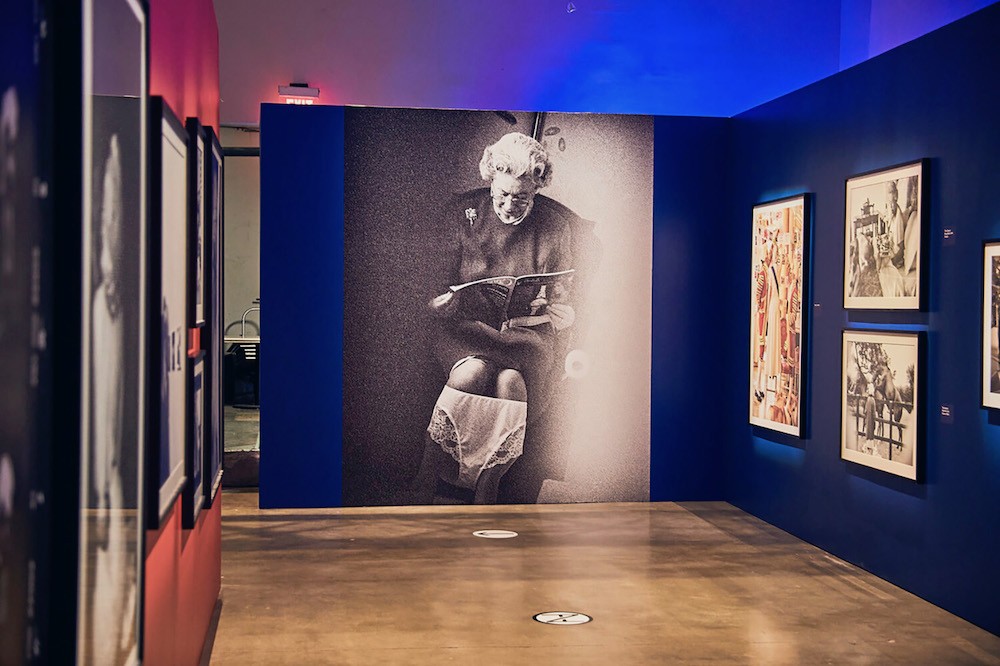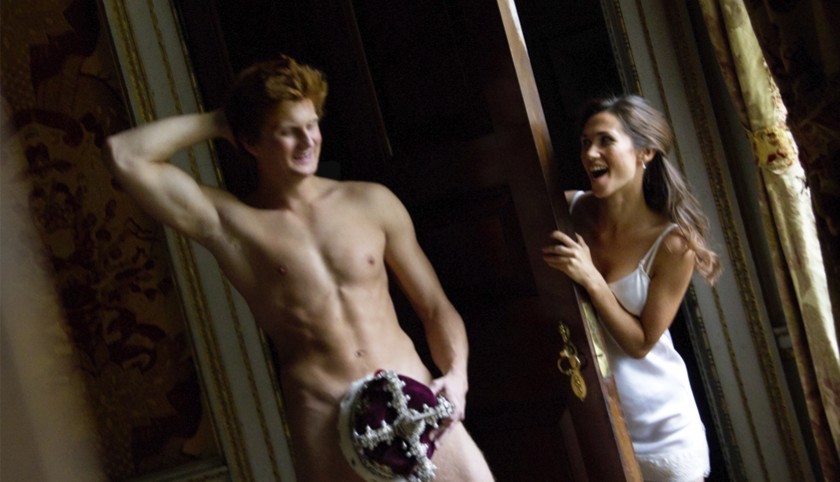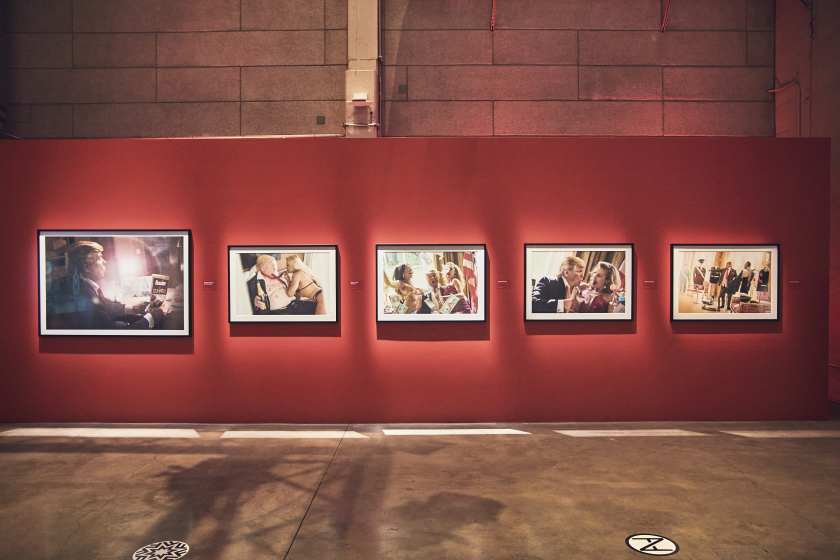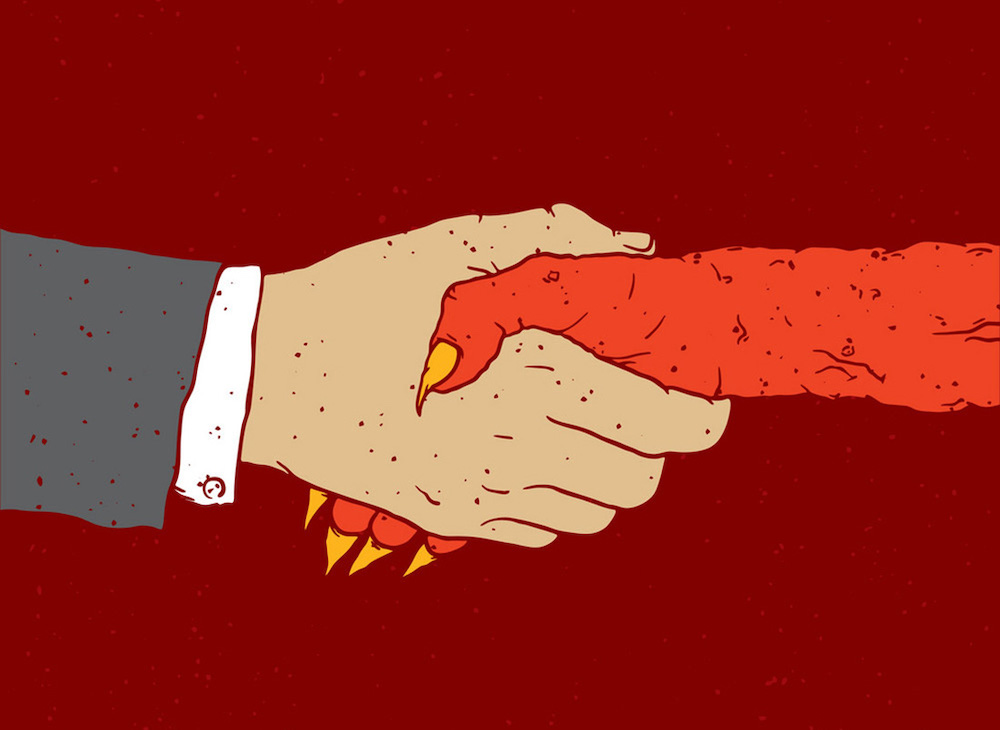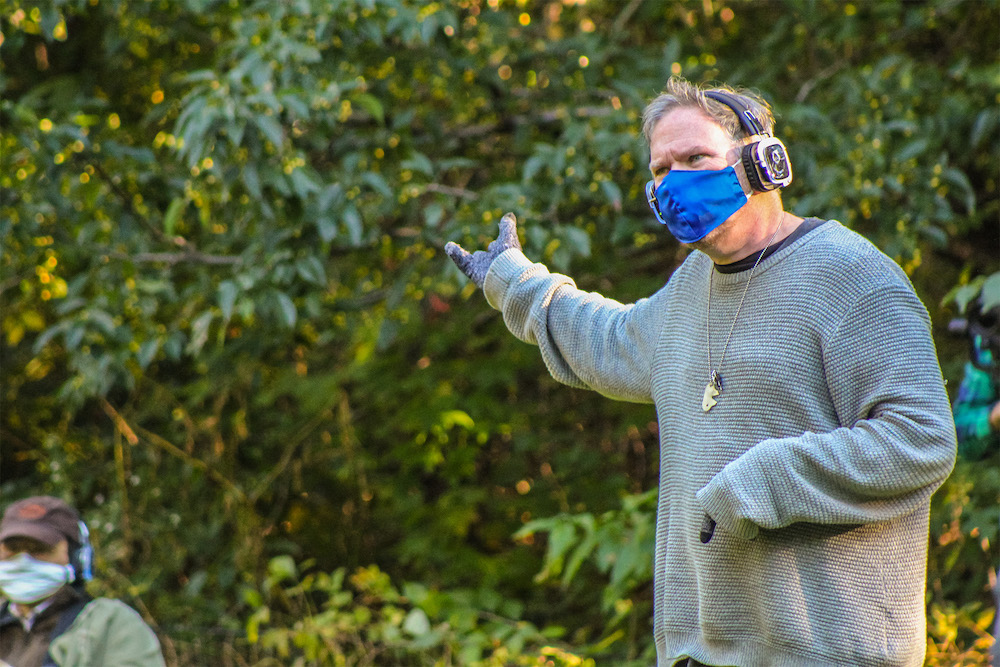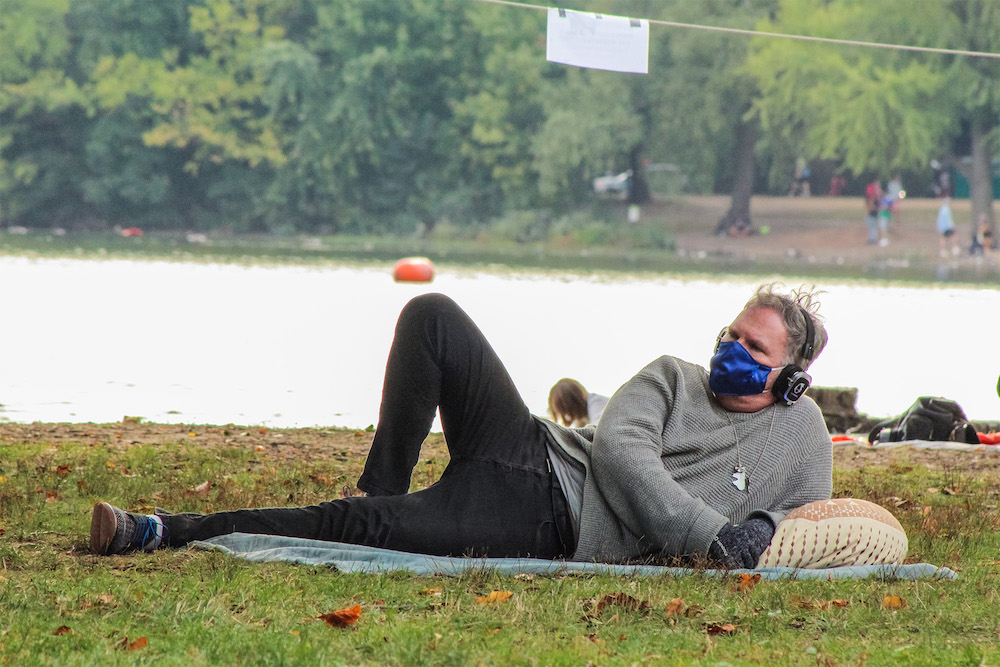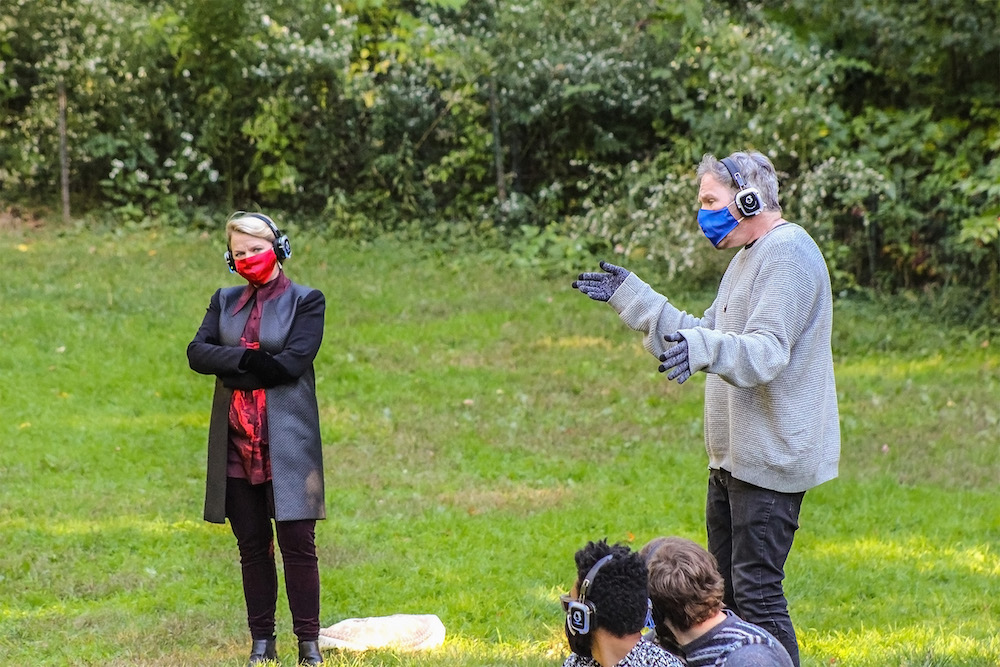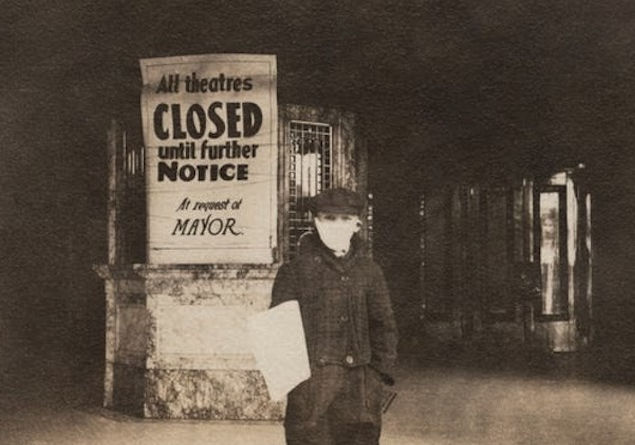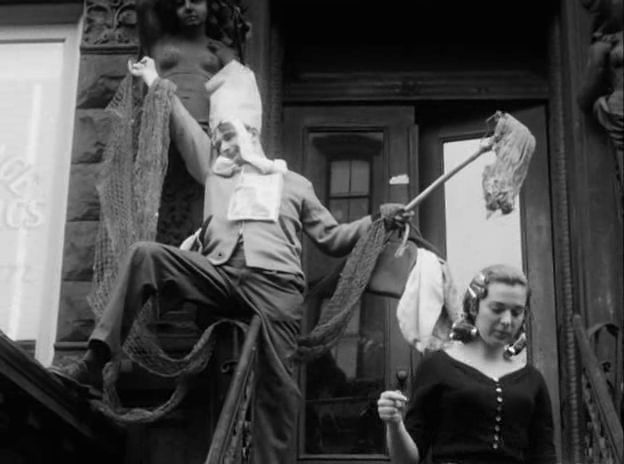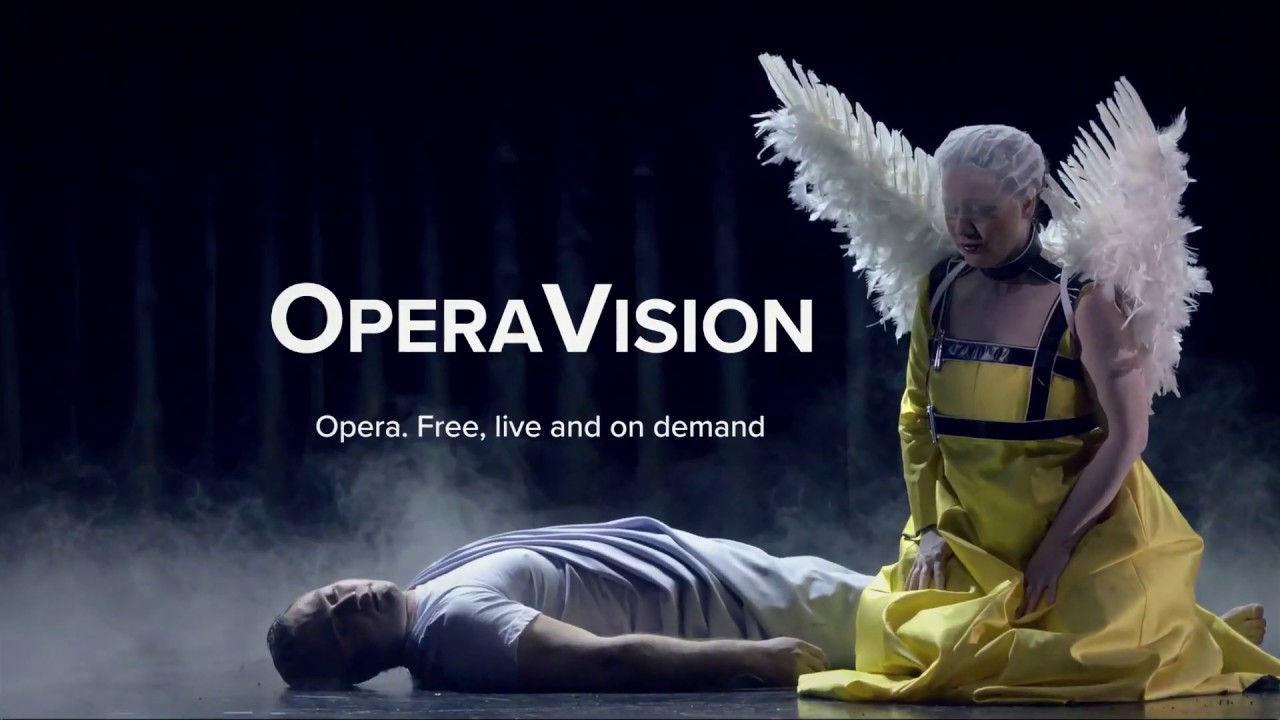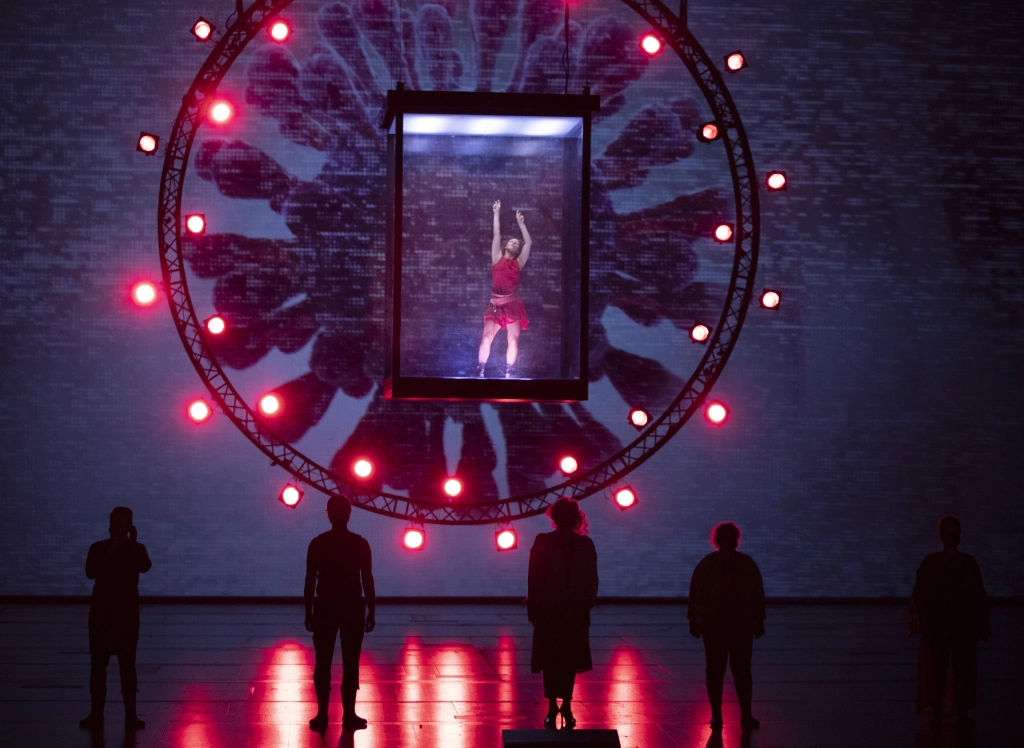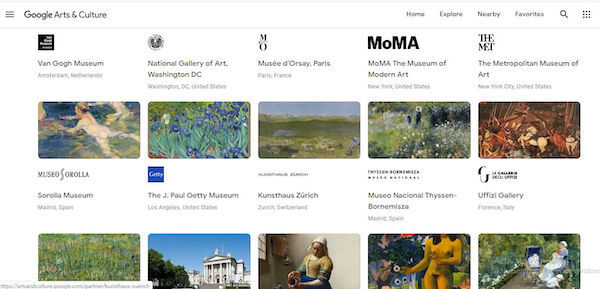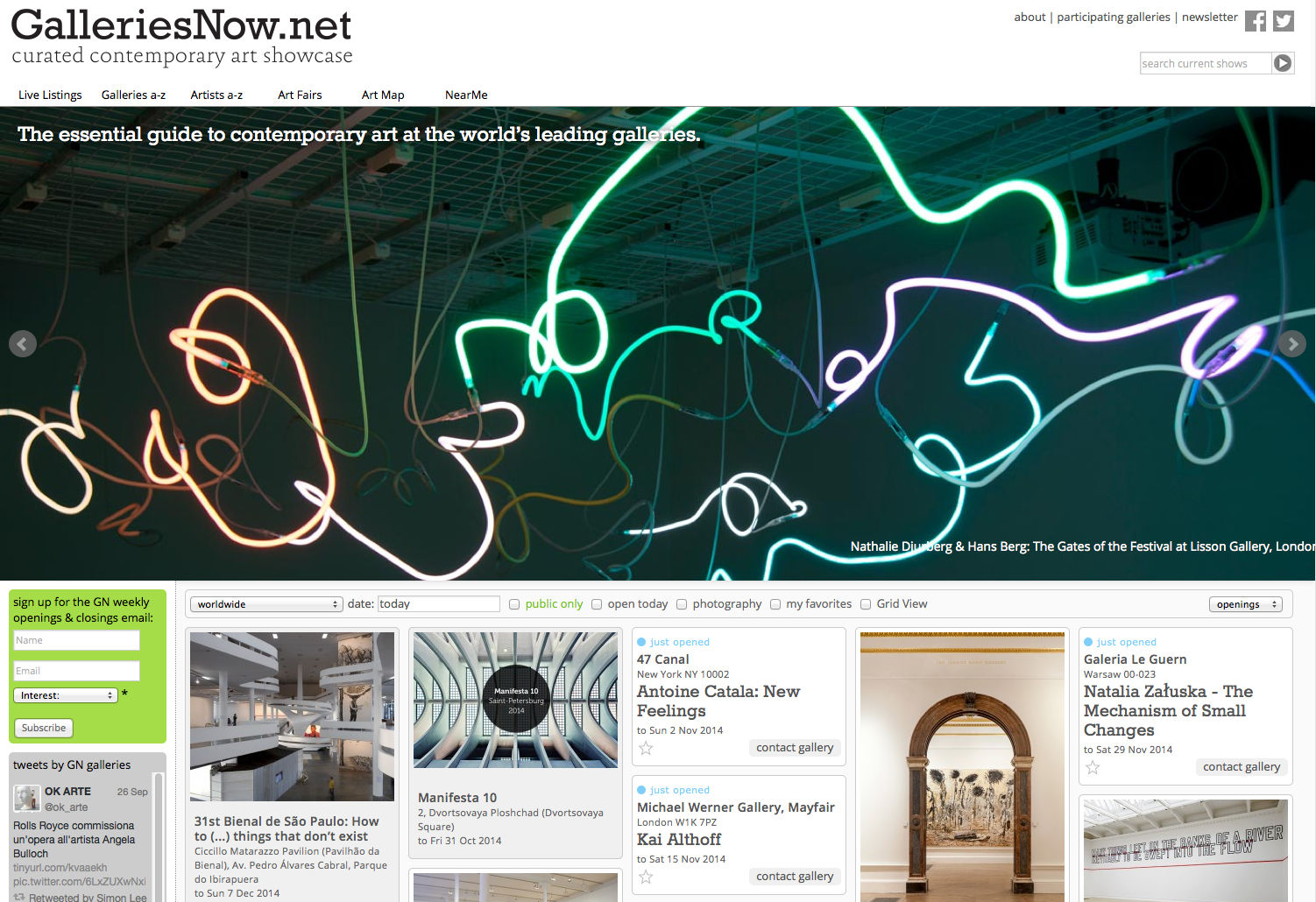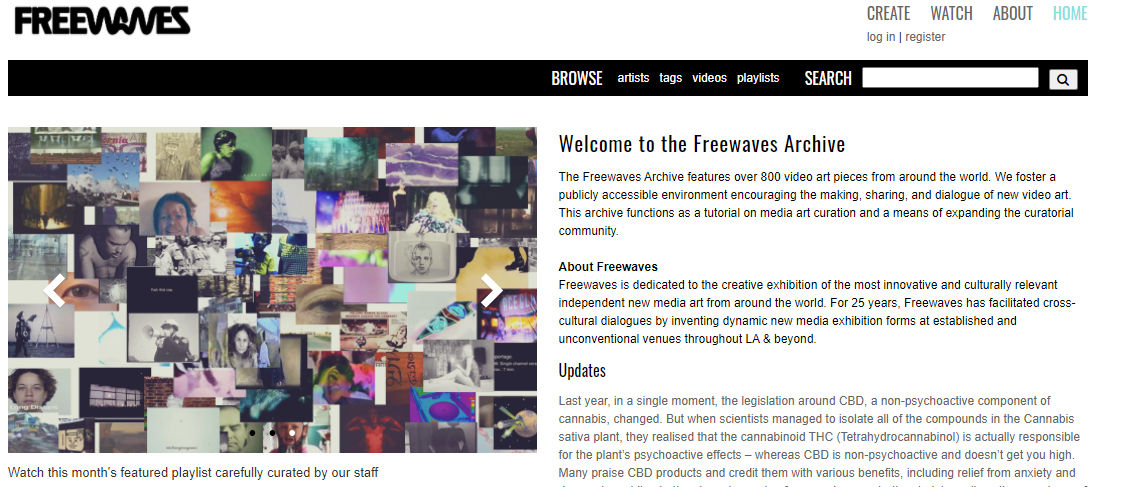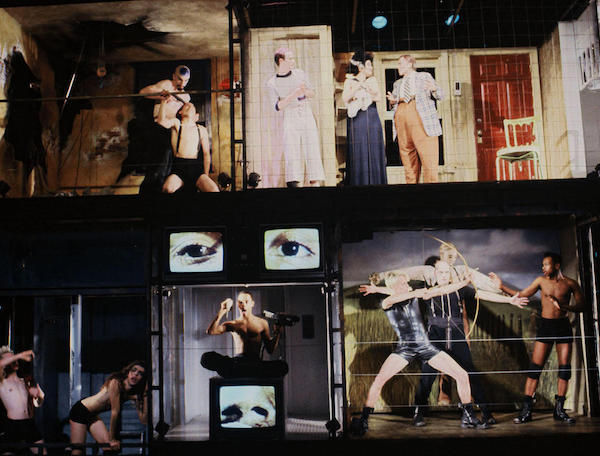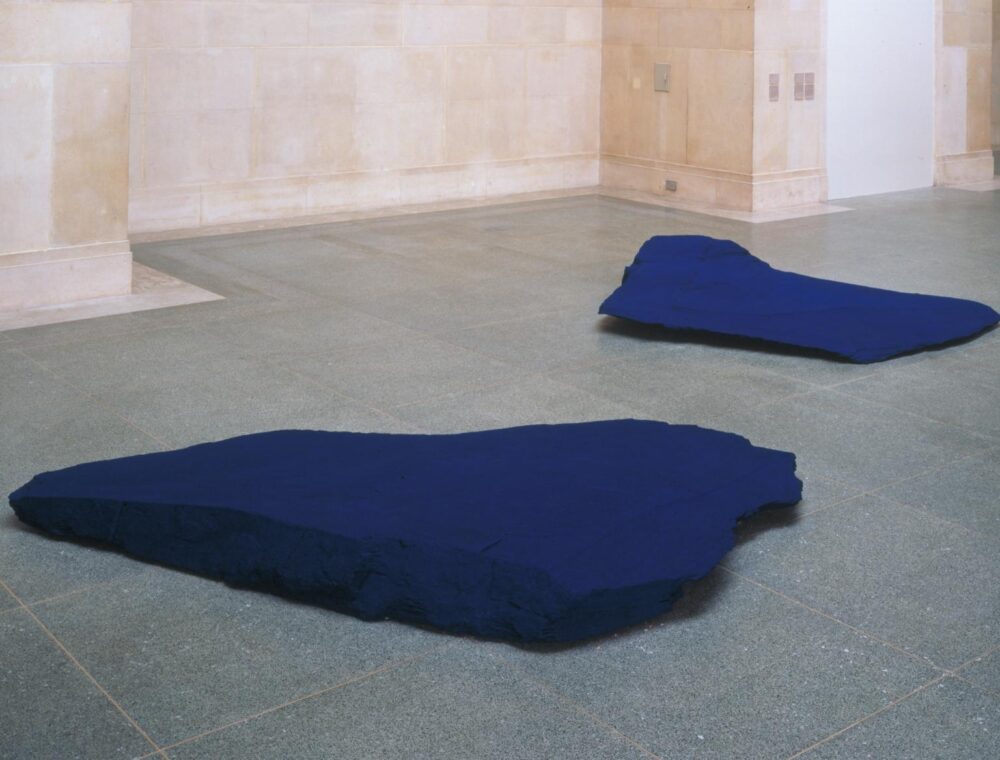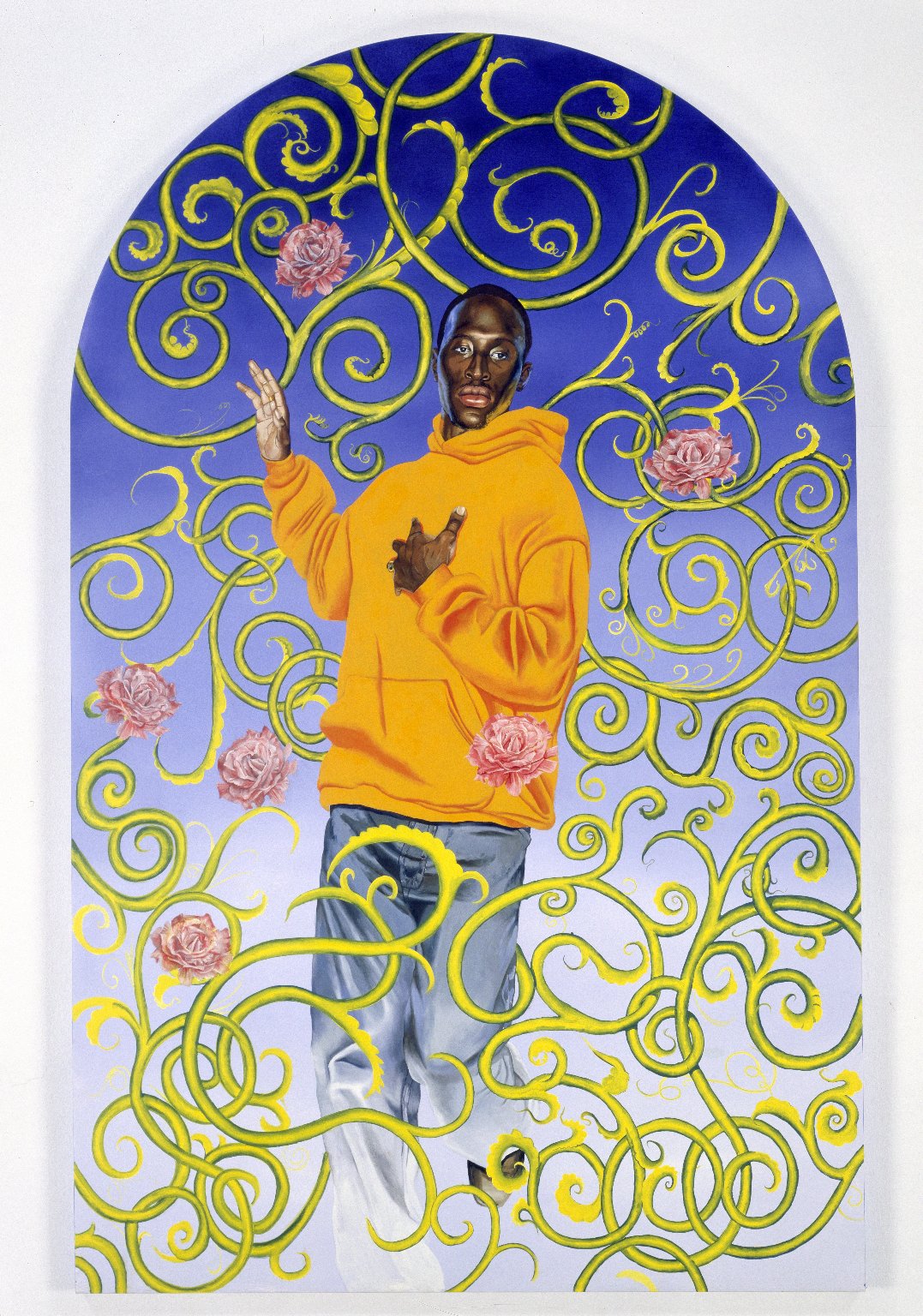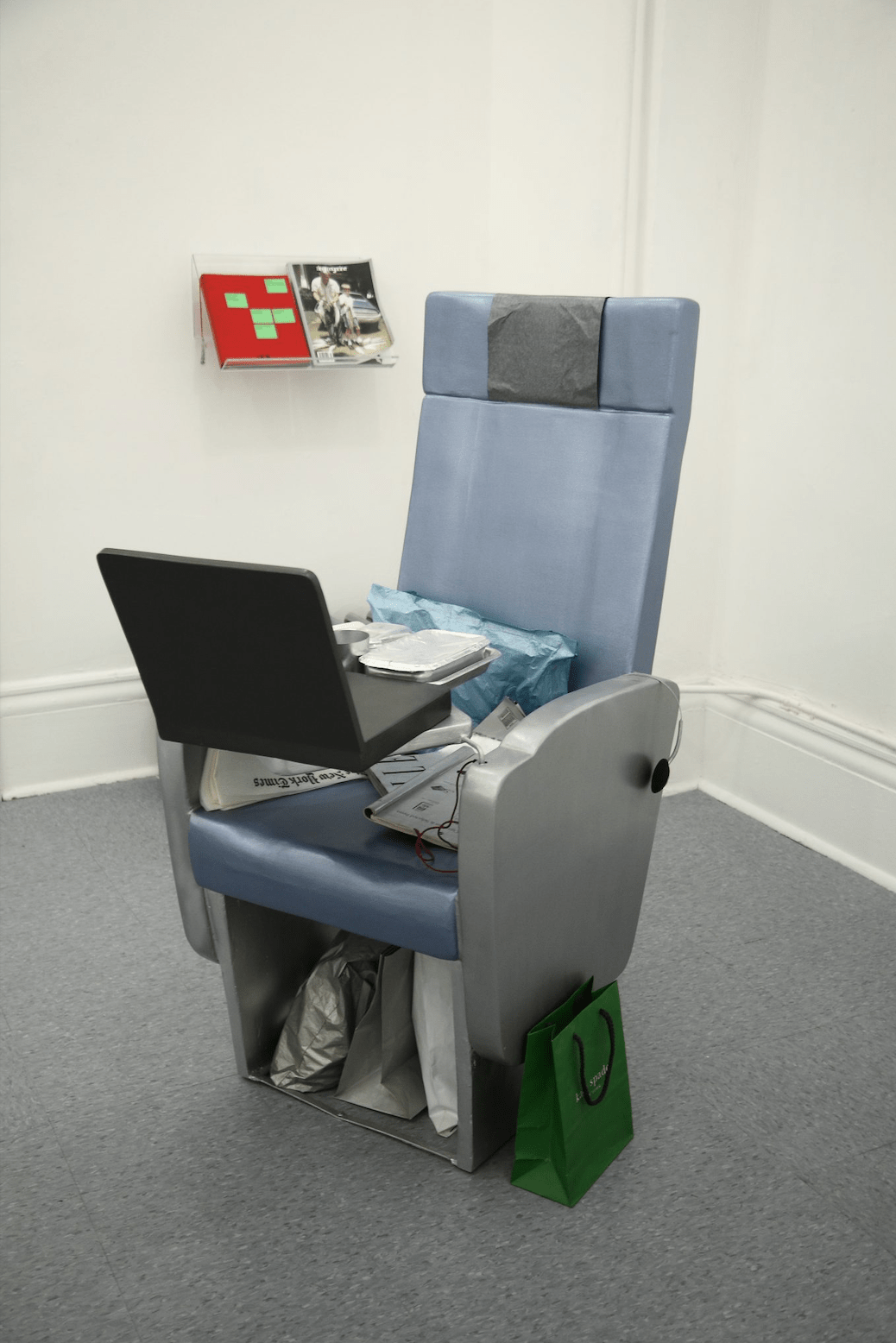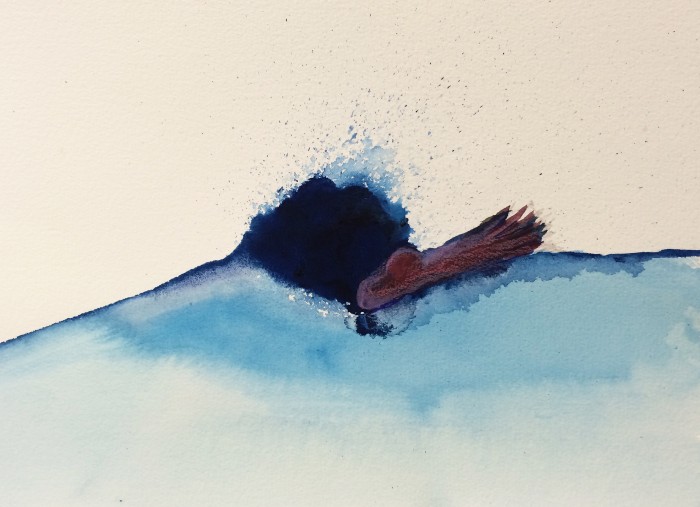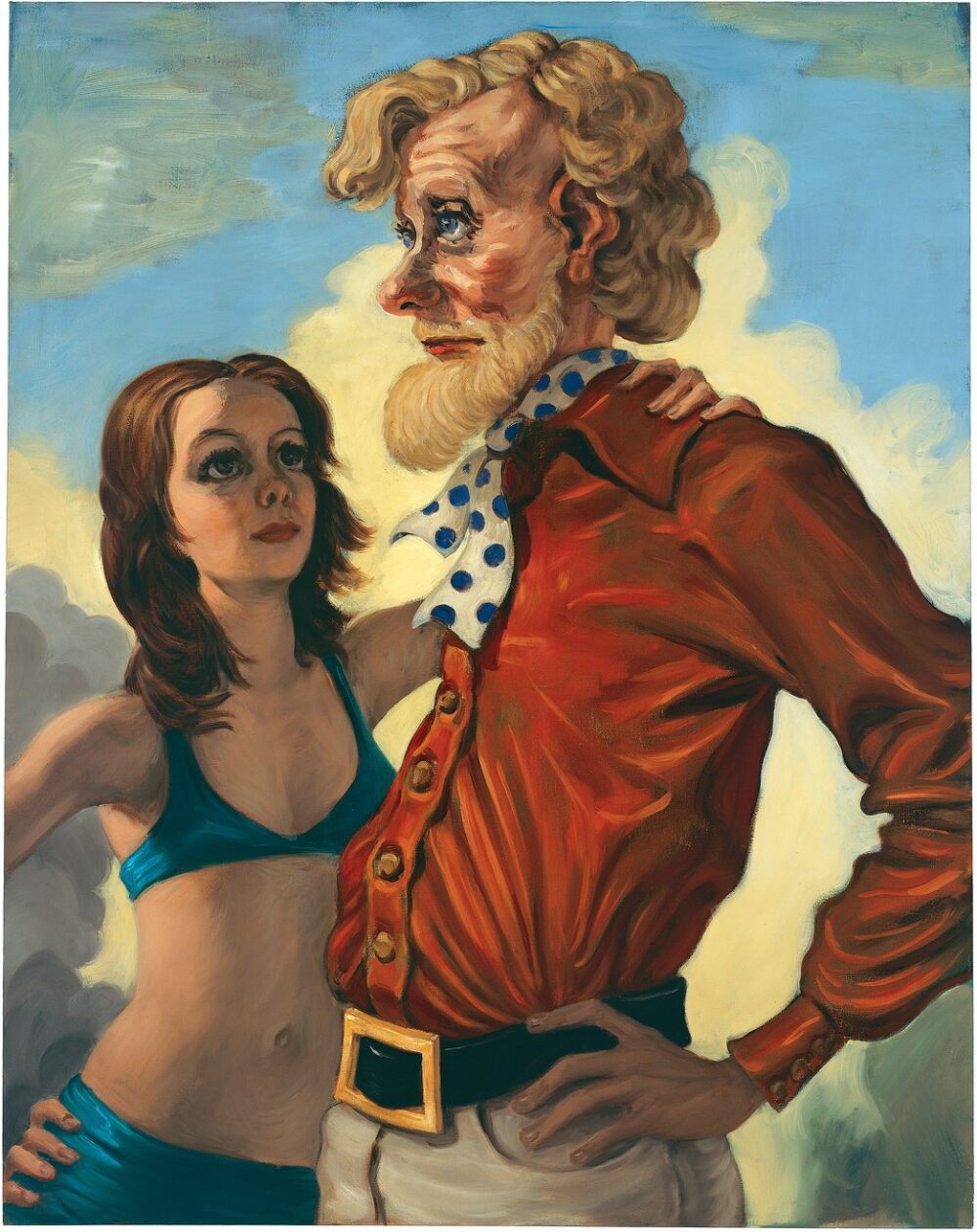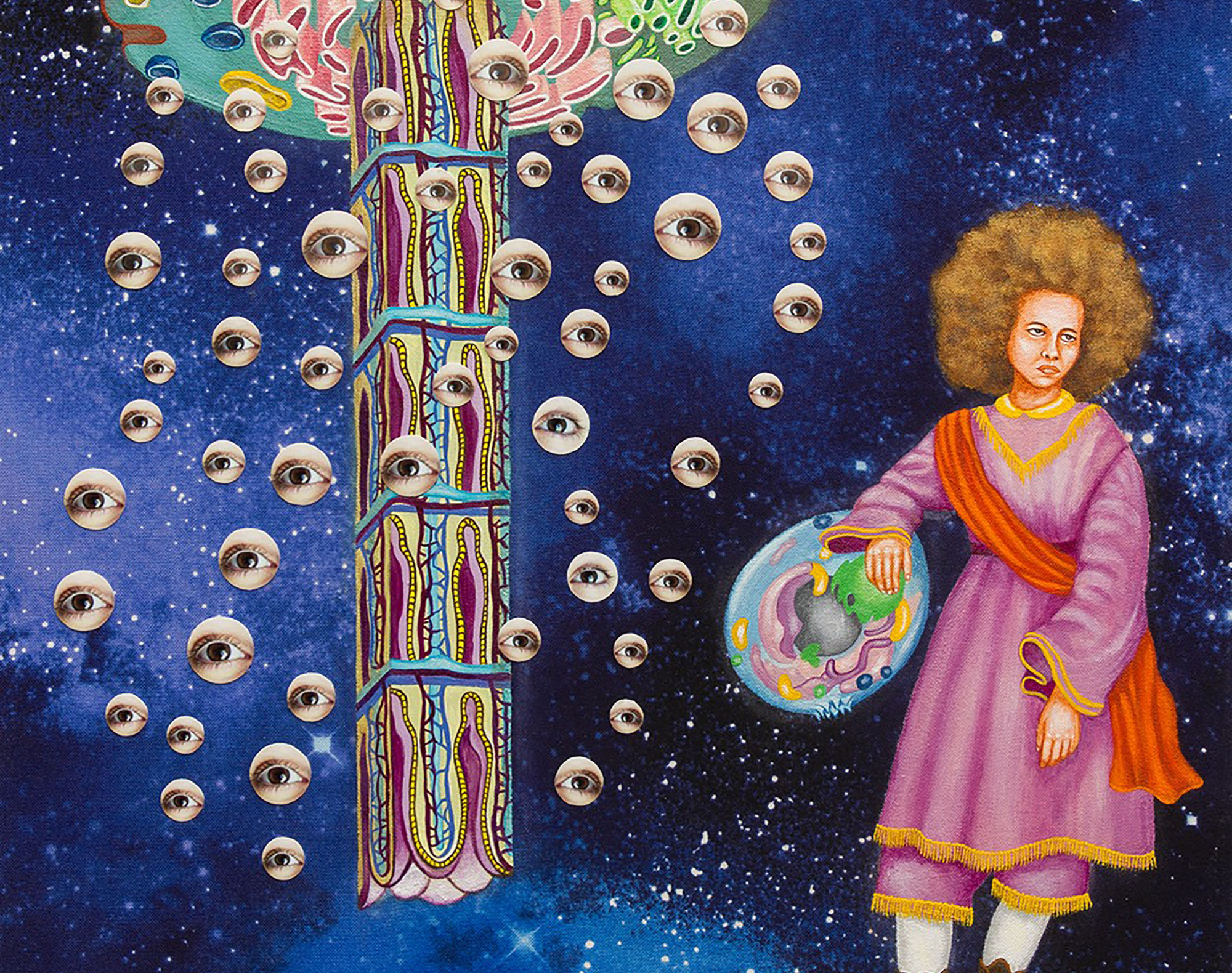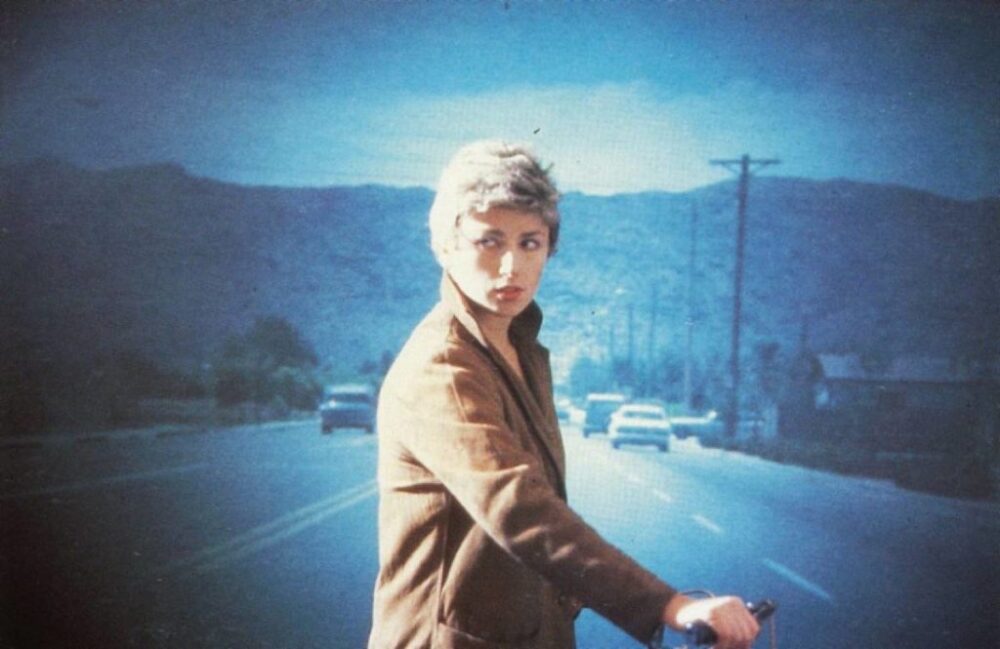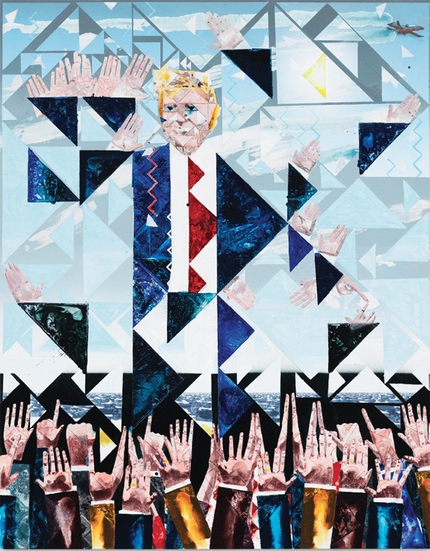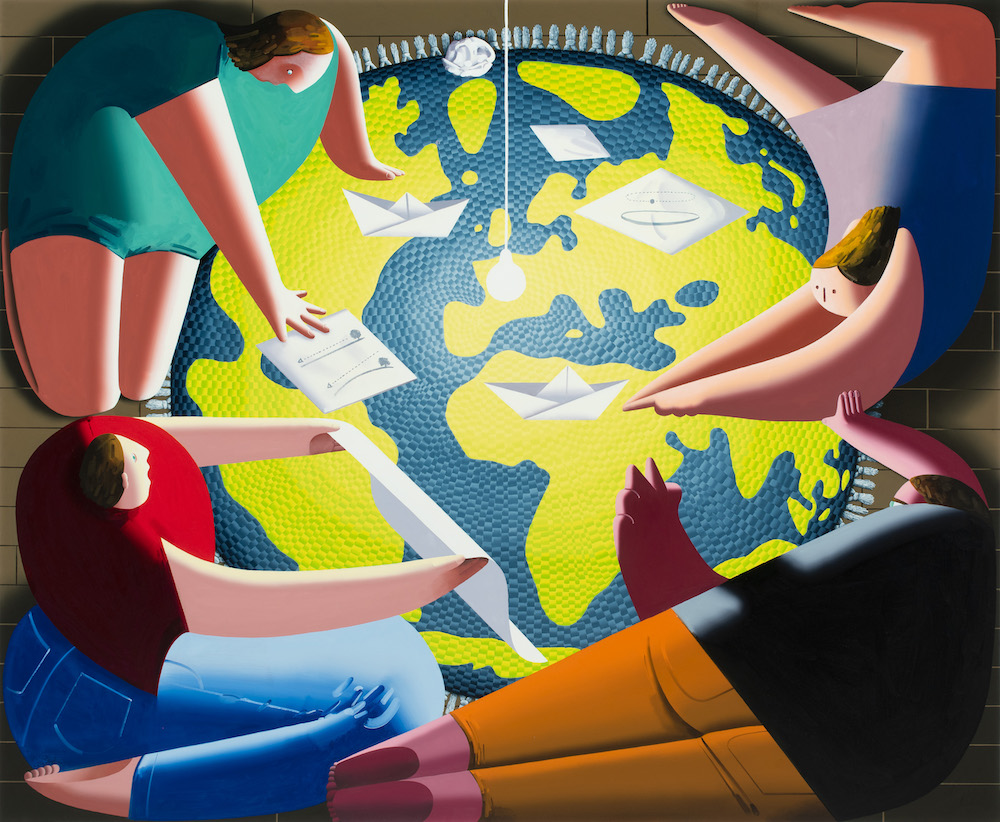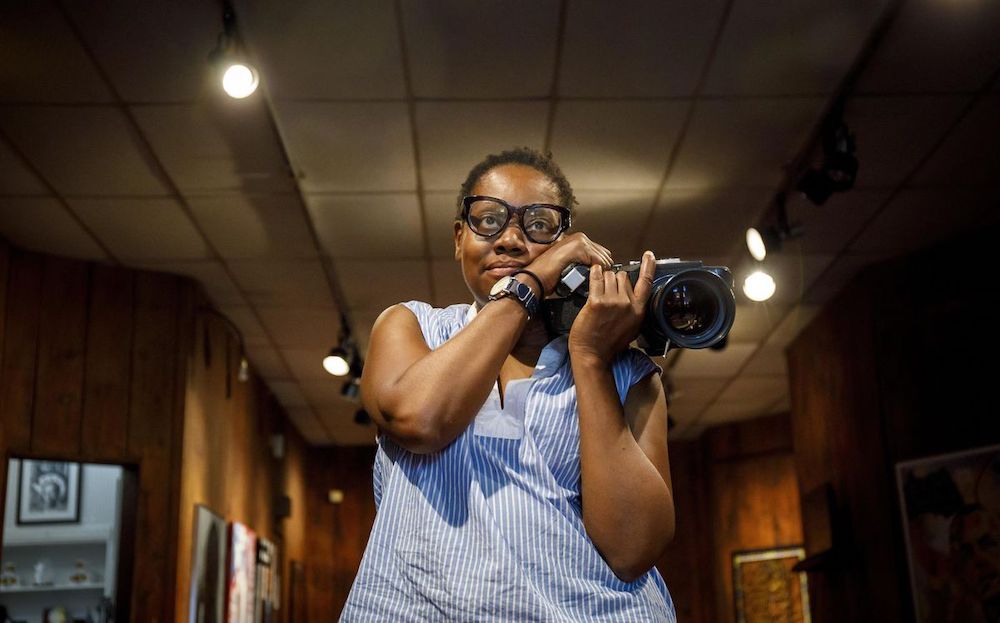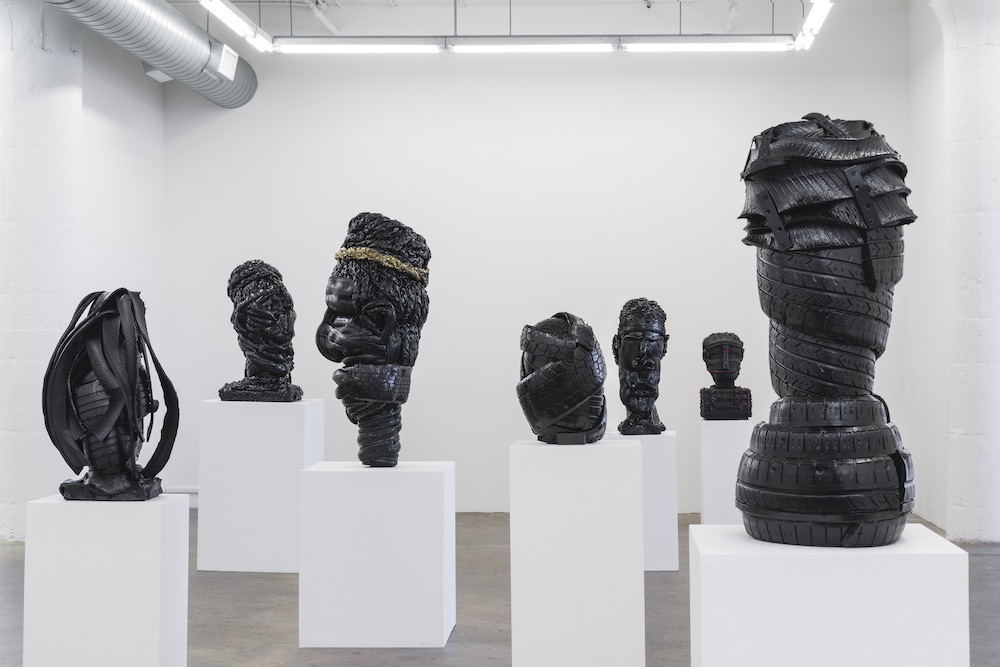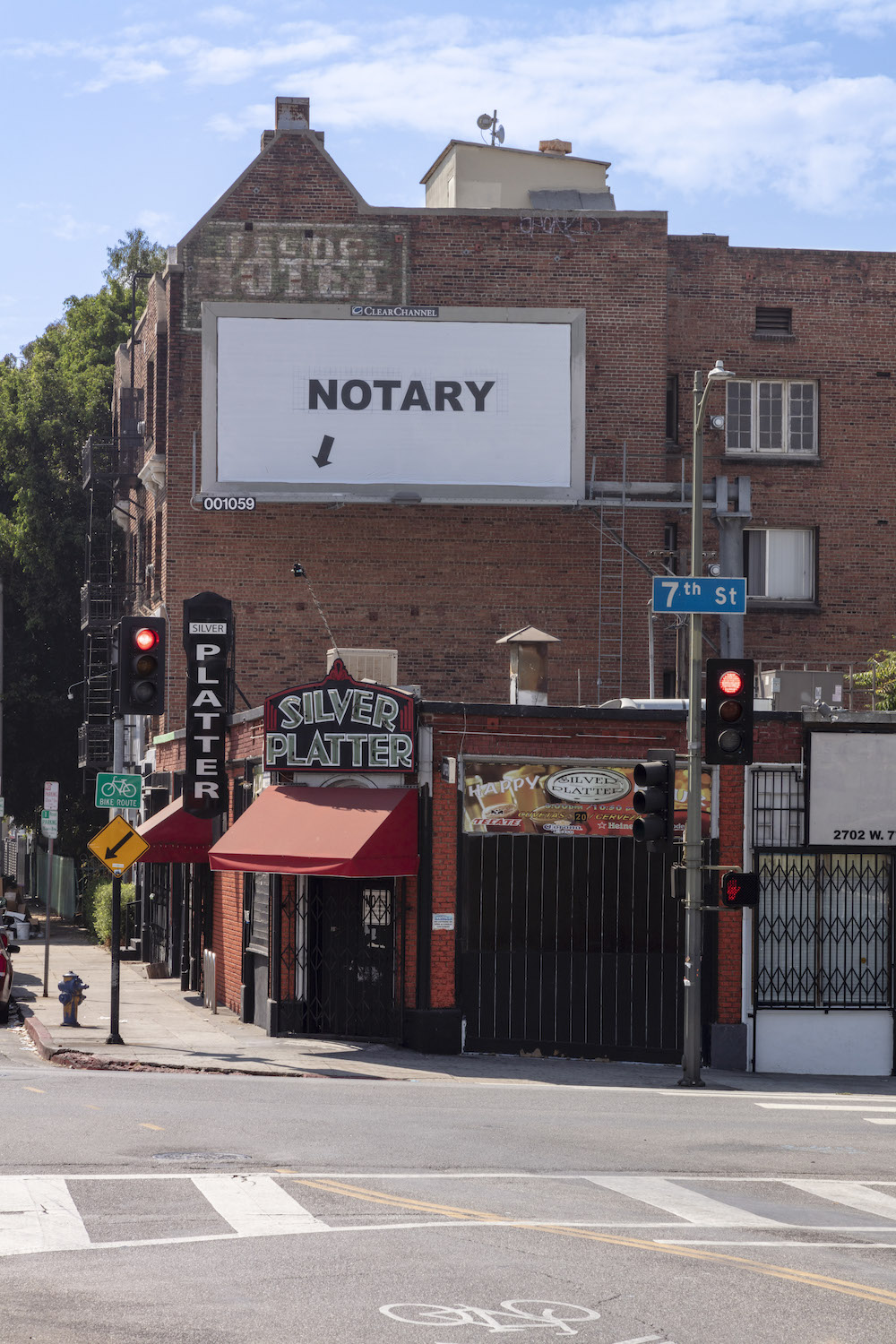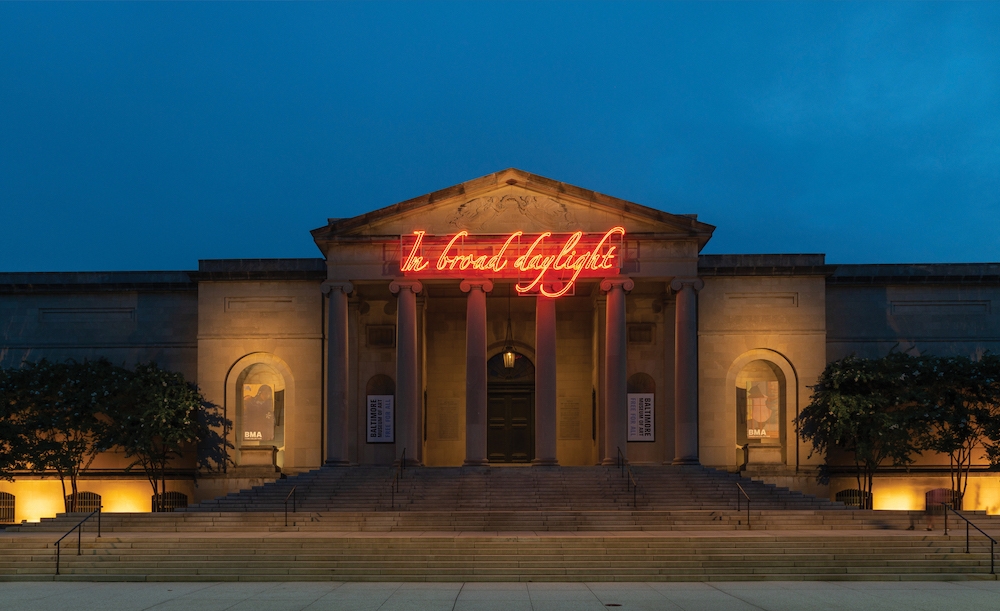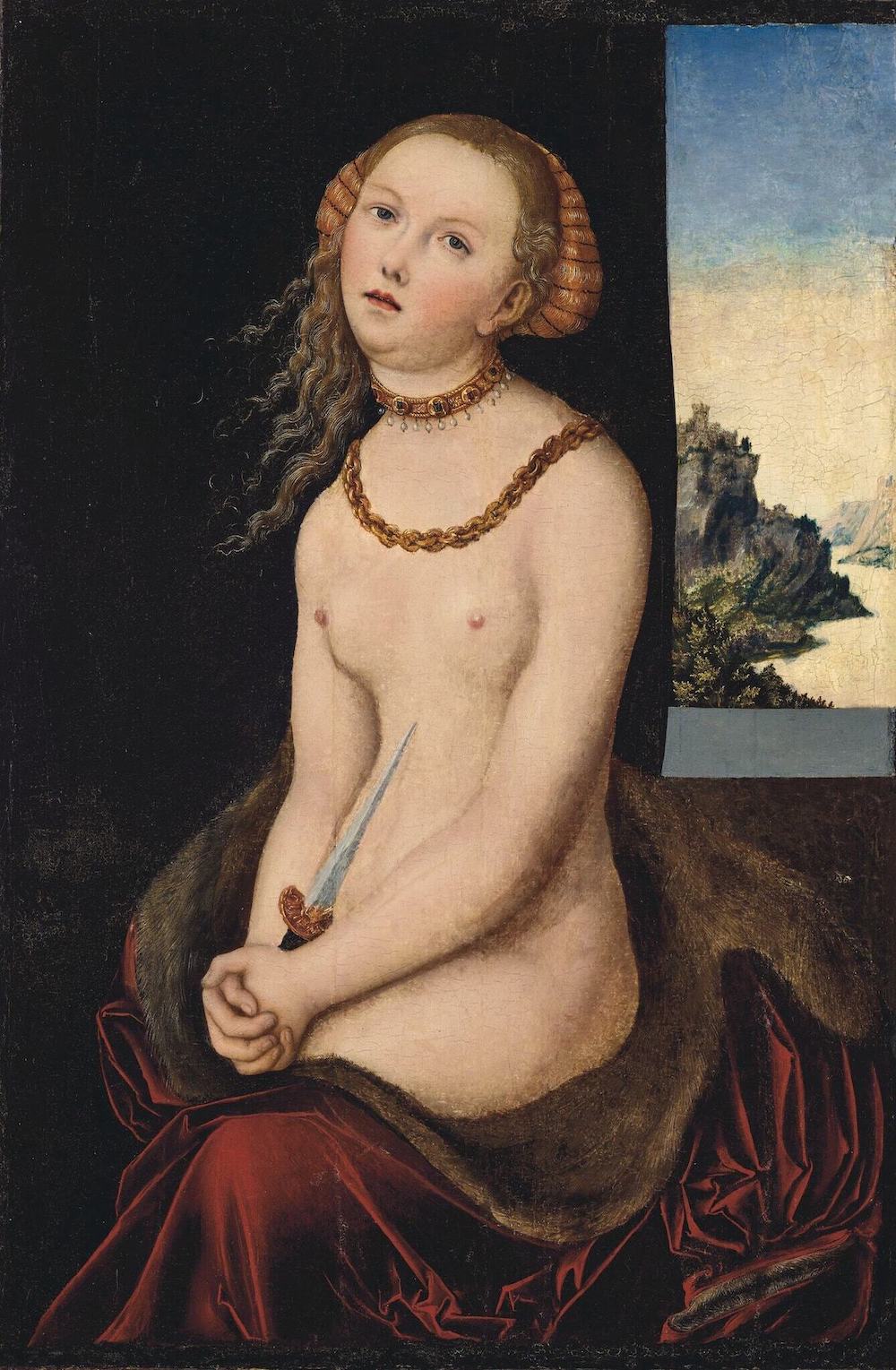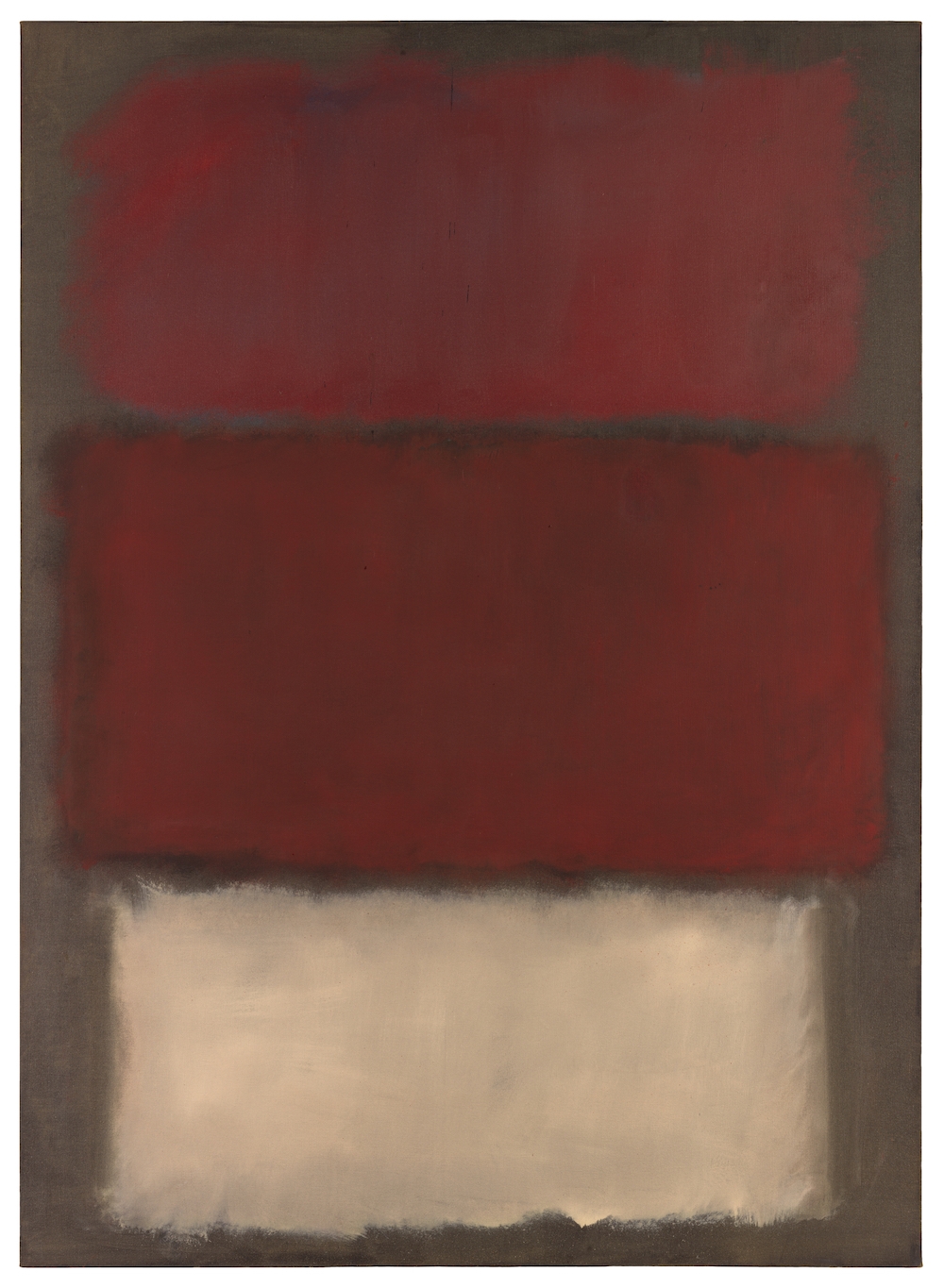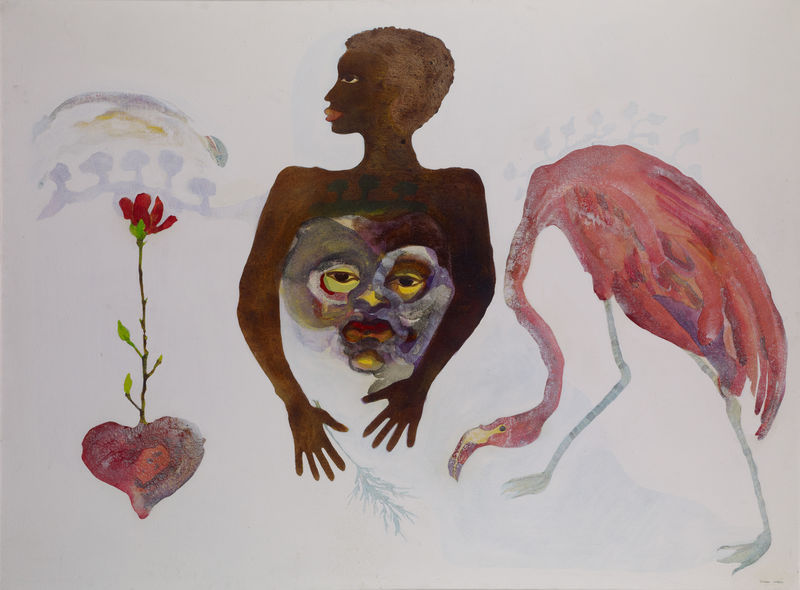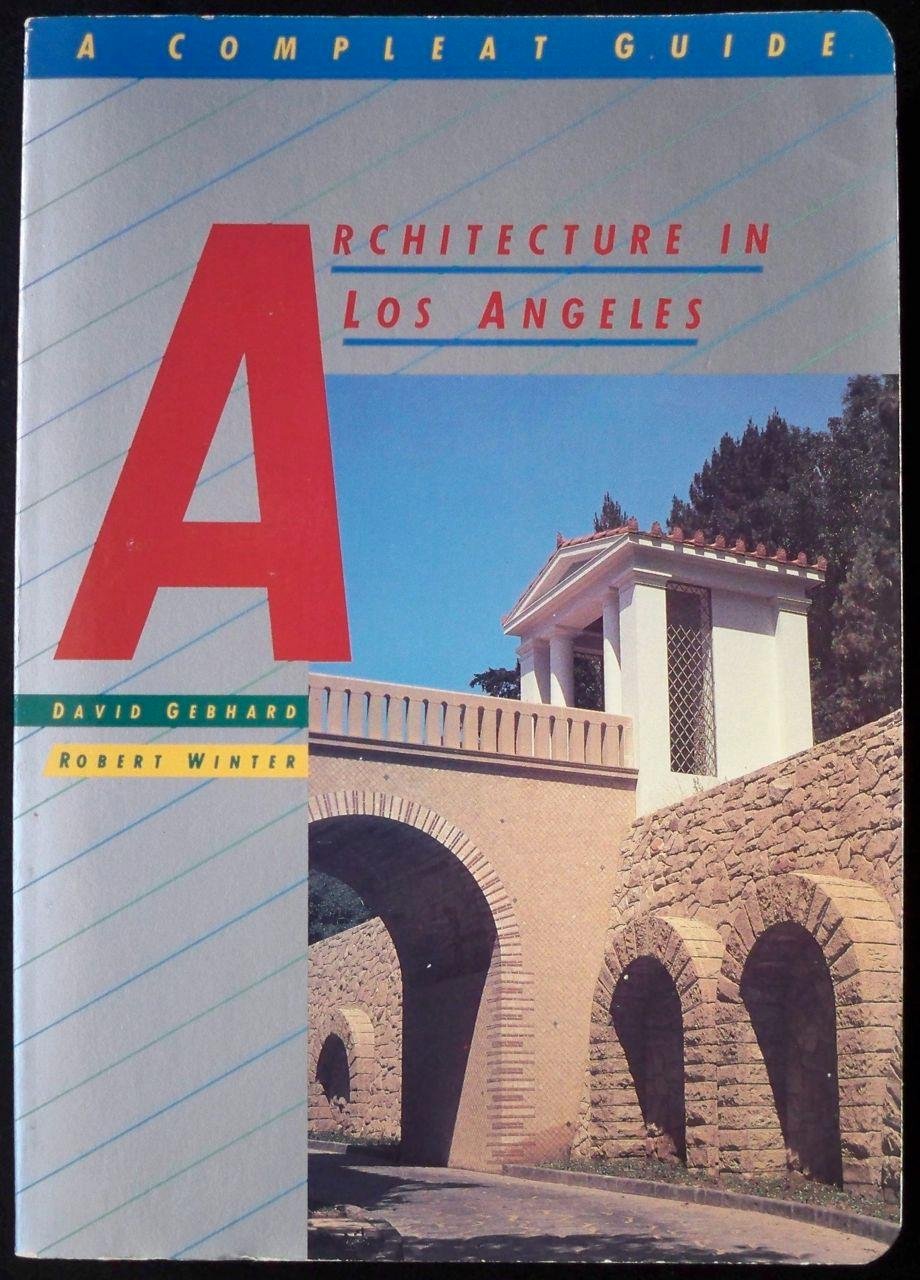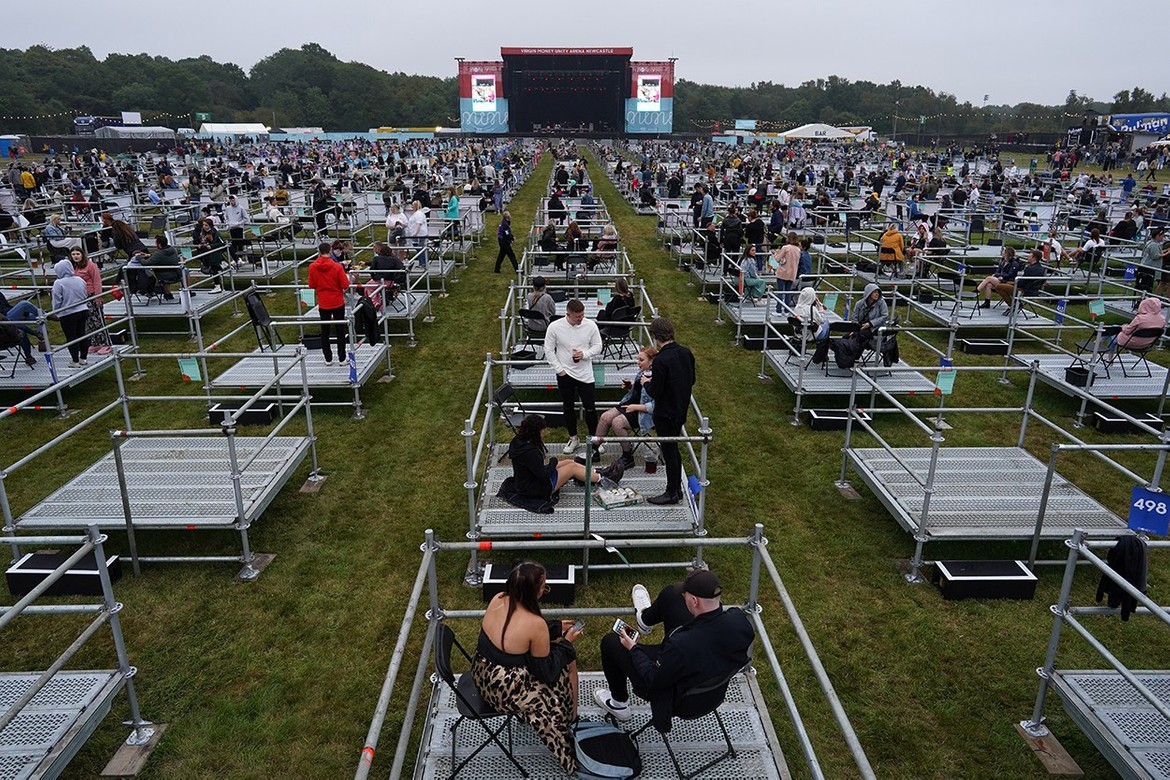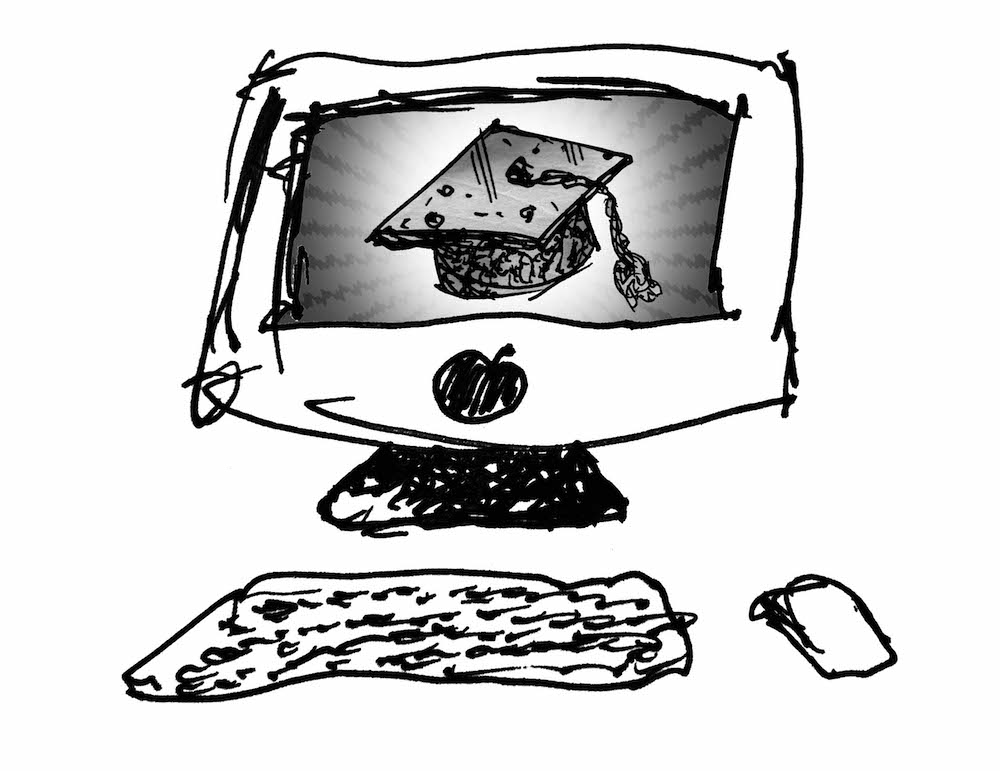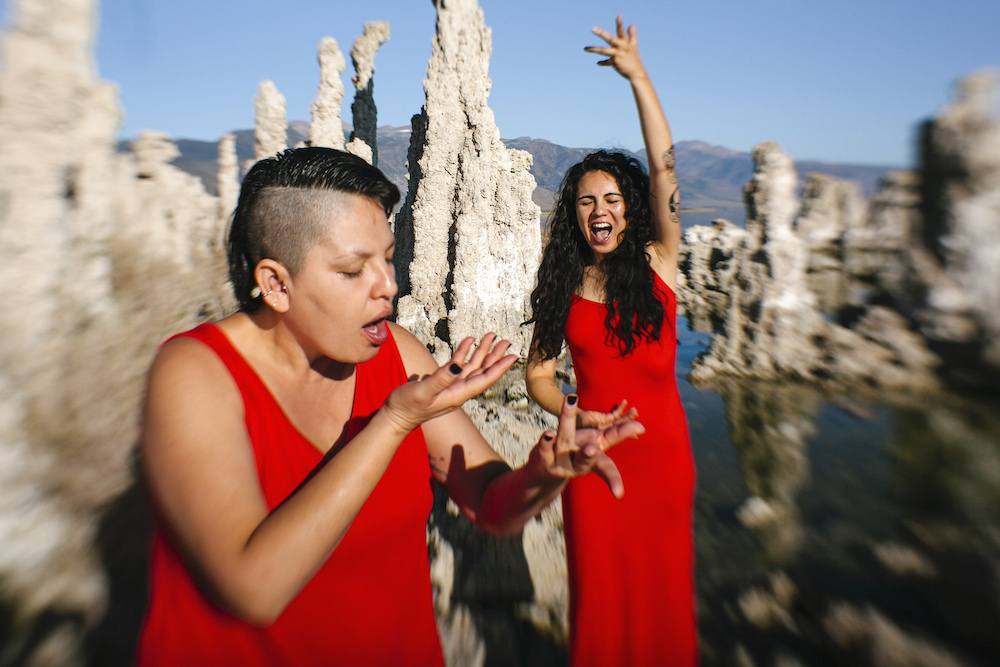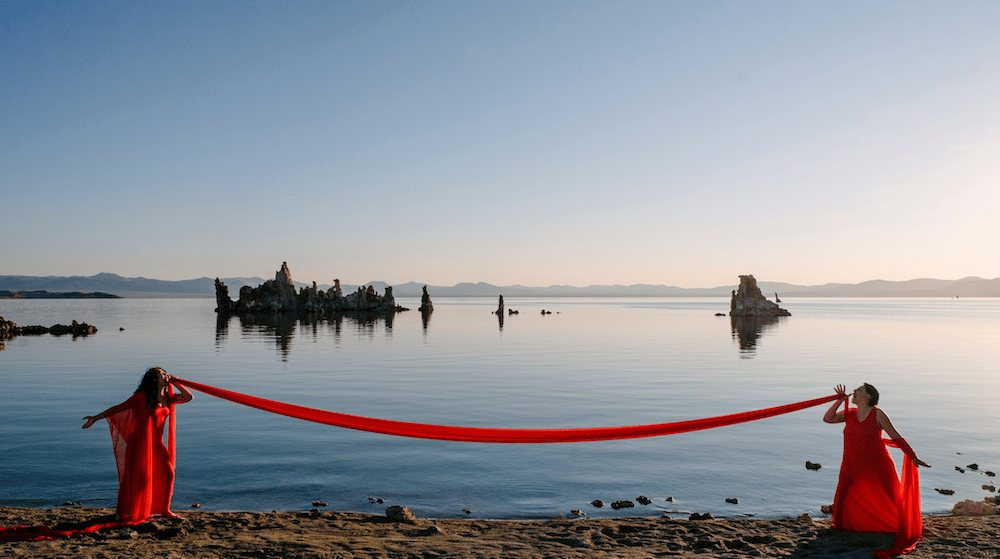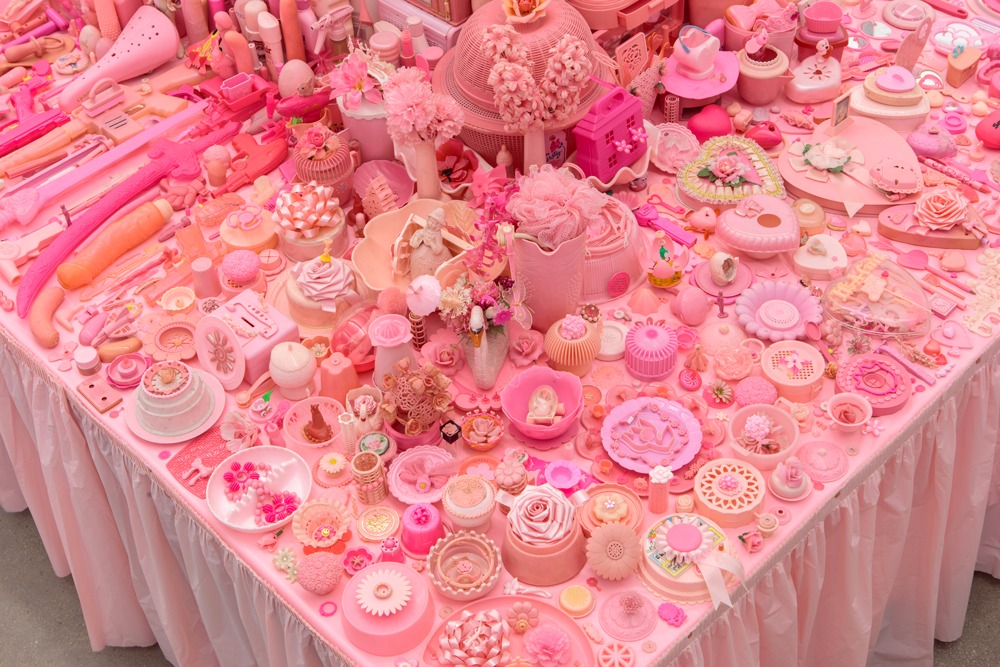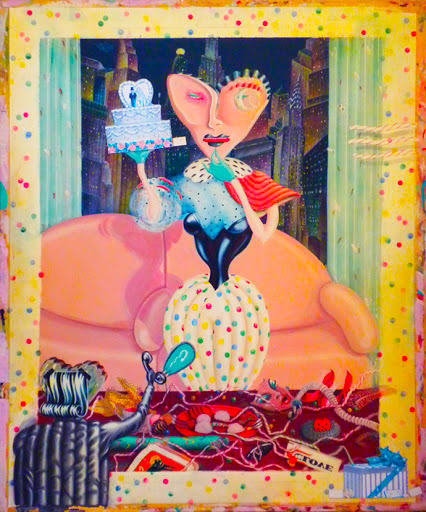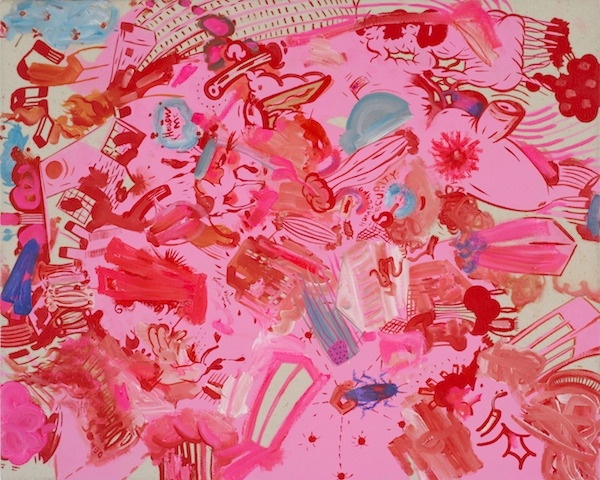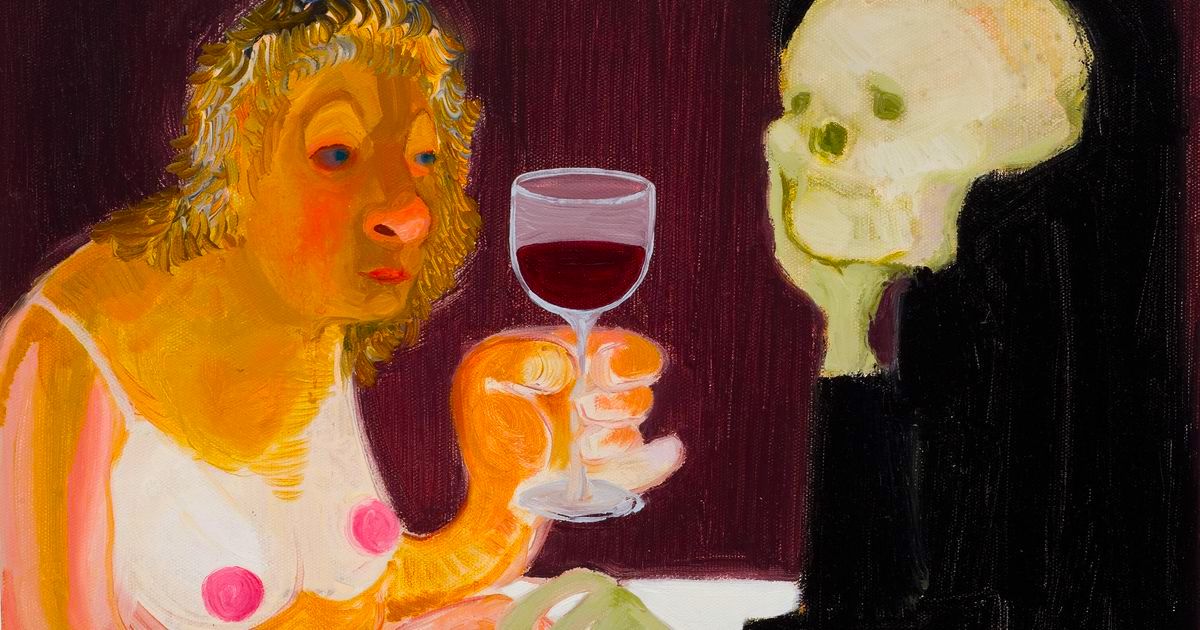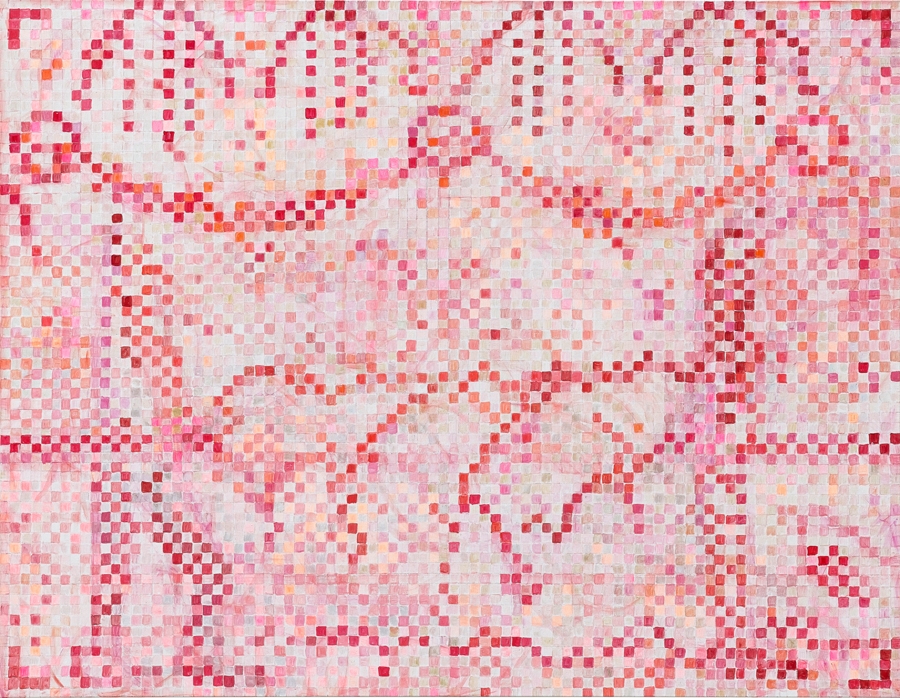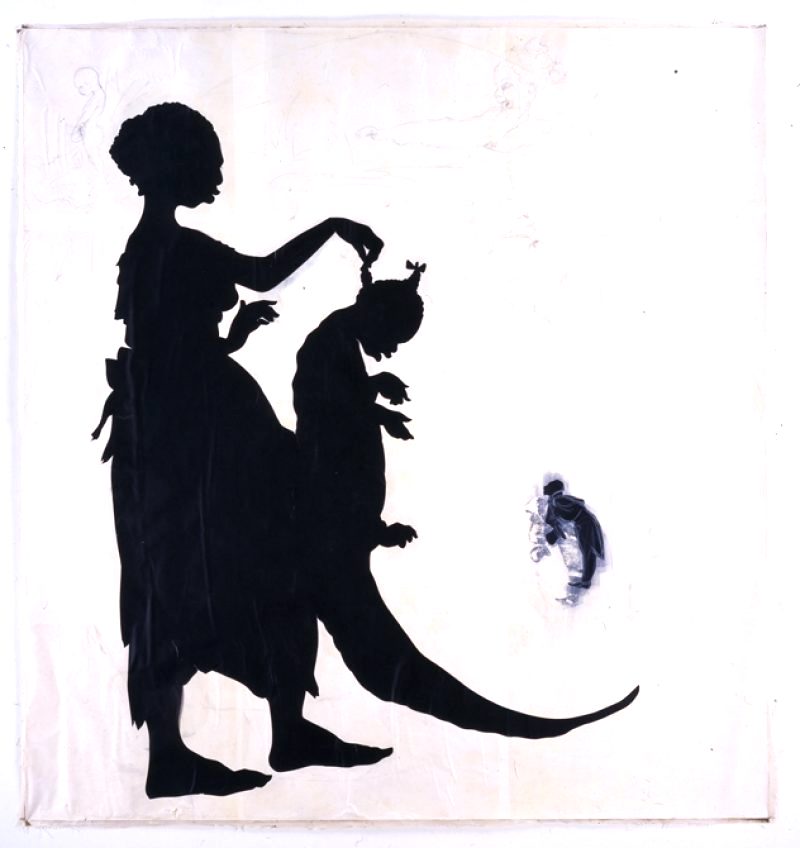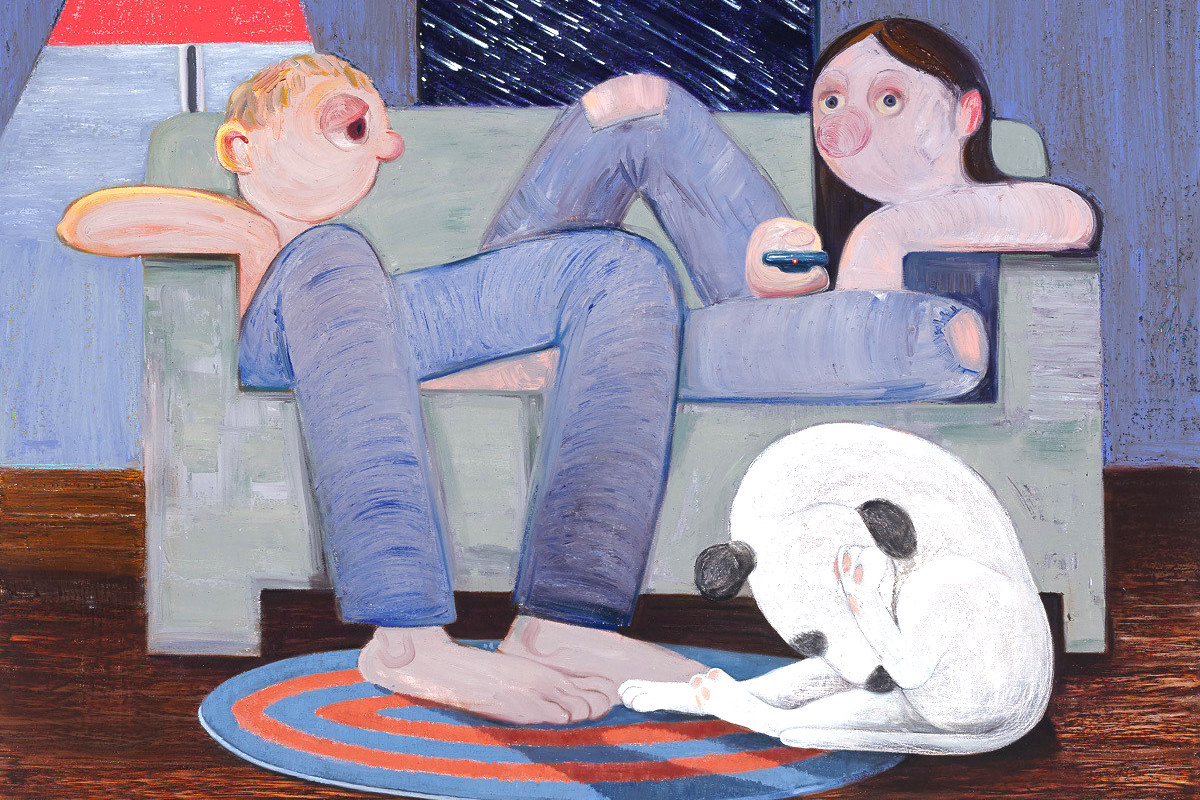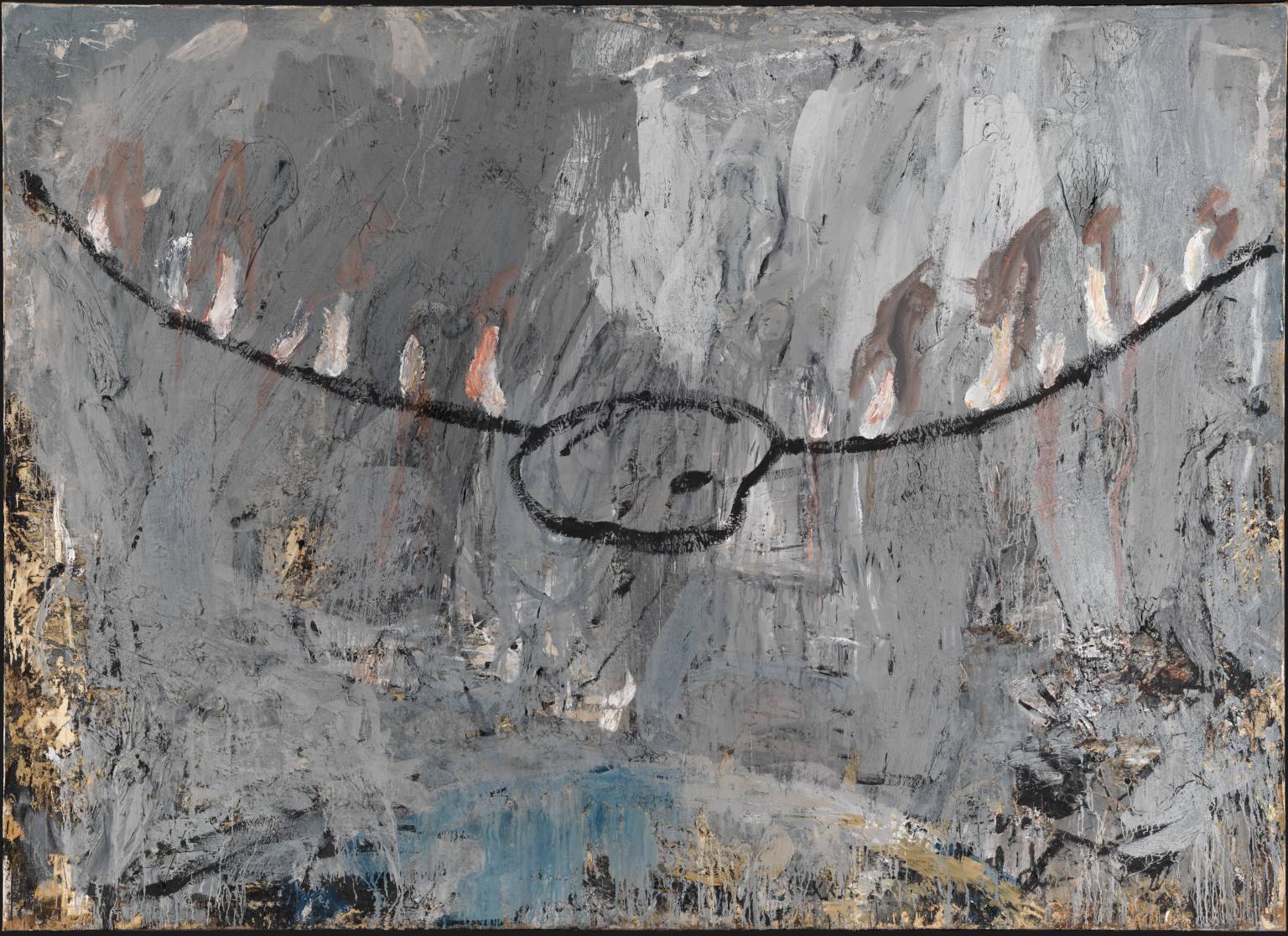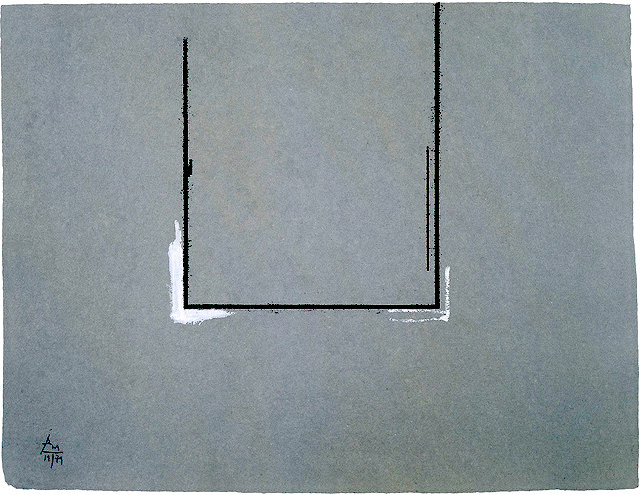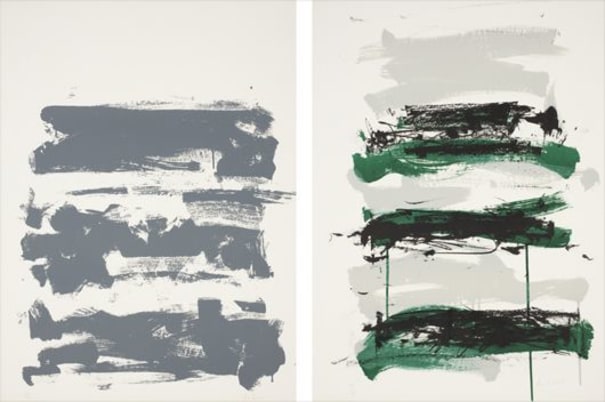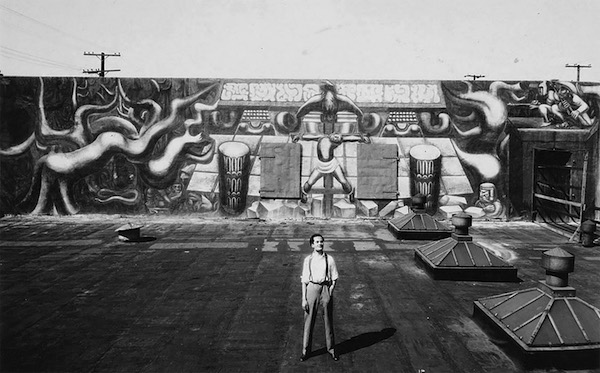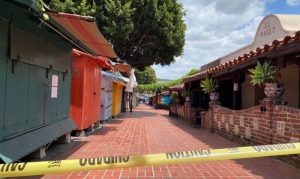Your cart is currently empty!
Category: columns
-

Fake Nudes
Alison Jackson’s “Truth is Dead”Artists can make the invisible become visible, but that doesn’t mean they have to. Photographers in particular find it necessary to provide visual confirmation of a chosen moment; in the case of some Pulitzer Prize winners, their captured image has become the official record of an event. But what’s most important is the assumption, particularly in news photographs, that the information presented is authentic. Unfortunately, that trust has been sullied by the biggest Postmodern hat trick of all: fake news.

“Truth is Dead,” 2020, at NeueHouse Hollywood, photos by Alison Jackson. Although ostensibly providing what she considers images necessary to parse current events, British photographer Alison Jackson seems more concerned with how to exploit a viewer’s fantasy concerning those events. For her NeueHouse exhibition, “Truth is Dead,” she photographed celebrity impersonators in farcical situations: doppelgängers of Lady Diana and other Royals are presented in unflattering poses, as is Donald Trump. But by the authority vested in her as an artist, she is somehow allowed and even praised for, as LA Times contributor Leah Ollman writes, “in the age of fake news …making fakes that become news.” In the same LA Times interview, Jackson claims that, “people are still wanting to believe the image more than anything. It doesn’t matter …that it’s not real.”

“Truth is Dead,” 2020, at NeueHouse Hollywood, photos by Alison Jackson. Ignoring such an important distinction makes it easier for people to believe that Jackson’s photographs, although not legit documentation, still accurately represent events that happened. After all, people are primed for it, for although they may shout God Save the Queen as loud as the next bloke, they secretly want to see how Queen Elizabeth II looks when stripped of her inviolability. If it takes a staged photo by Jackson to reassure people that the Queen shits like everyone else, so be it. The question is, however, whether or not that really needs to be seen.

Alison Jackson, “Royal Jewels,” 2020. In the art world, there is no sin greater than presenting a counterfeit work of art as one that is genuine; it’s an act that is legally considered criminal. But a work of art presenting a counterfeit event gets no such condemnation; in fact, grayheads will debate its finer qualities. This once again proves the disconnect between the art world and its secular equivalent, the world without art. Art is the only arena where something without usefulness becomes essential; plus, it’s a place where impersonators seem to represent what transpired far more accurately than the actual players.

“Truth is Dead,” 2020, at NeueHouse Hollywood, photos by Alison Jackson. For all her black leather and vaunted no-bullshit approach, Jackson still delivers art in a weirdly boring traditional manner; that is, as expected. Jackson’s work is obviously created to play into the anticipations of Trump detractors, and there’s plenty to incite their rage. But while reality has limits, fiction does not; so maybe instead of presenting Trump doing what we already believe him to have done, Jackson could show Trump doing something completely unexpected: like working in a soup kitchen or helping an old lady across the street. Now that would really prove truth is dead.
-

Bunker Vision
SpookedFifty years ago, when the Manson murders were daily headline news, the reporting emphasized anything that might pass for “hippie behavior,” while playing down Manson’s intended goal to start a race war. The dog-whistling, race-based law and order tropes of politicians couldn’t have this degenerate agreeing with their we-don’t-say-it-out-loud messaging. Manson didn’t pull the idea out of thin air. He was just being honest about what his actual goals were. At just about any protest nowadays you are likely to see a gaggle of beige Gravy Seals waddling around with giant guns that they barely have the strength to lift. They are armed and ready for anything that doesn’t require too much physical exertion. So, who exactly was this war against?
In the late 1960s the Black community started to really get organized. The Black Panthers offered a visual flourish of paramilitary style that triggered the worst fears of the white hood set. In 1969 a novel by Sam Greenlee dealing with Black militancy finally found a publisher in the UK (after being rejected by numerous US publishers). In 1973 it was adapted into a film. Both were titled The Spook Who Sat By the Door. The titular “spook” was a double pun. It was a word that derogatorily referred to both Black people and spies. Although the film came out at the height of the Blaxploitation genre, it feels more professional than many films of that ilk. The filmmaker had spent five seasons (1965–71) as a cast member (the sole Black one) of Hogan’s Heroes.
“By the door” was code for placing a minority where they would be the first person that people saw when they visited your place of business. The plot concerns a call by higher-ups to integrate the CIA. The head honchos of the CIA (crackers in polyester) recruit a number of Black men and devise a training program so rigorous that nobody can pass it. With each round of eliminations, one small unassuming man in glasses survives. He refuses to join parties, and toes the line so completely that the others start calling him an Uncle Tom. His humble demeanor causes the bosses to actually be happy that somebody survived, to sit by the door. He is given a really fancy title that translates to “photocopy machine operator,” where he continues to build his data base of knowledge. When politicians come to visit, he is tasked with giving them the tour. He is the perfect token.
Then he quits to pursue “social work.” This social work turns out to consist of teaching his fellow community members everything he learned at the CIA. The community is portrayed much like the Black Panther communities in a best case scenario. They employ some Oceans Eleven–level subterfuge to appropriate a giant cache of weapons. The movie ends with well-trained and well-armed Black militias staging the first volleys of a race war in every major US city.
Bowing to government pressure, the film was buried by the studio, until somebody decided to give it a DVD release in the mid-aughts. The negative was found in a mislabeled film can. It is now available on DVD and a full version often turns up on YouTube. This year it was featured as a revival selection at the NY Film Festival. Given how well this film has aged, its second life is well deserved.
-

ASK BABS
Turn A Blind EyeDear Babs, I’m a young artist a few years out of grad school. Recently my dad’s close friend asked if he could buy a painting I made about America’s racist prison industrial complex. In the spirit of transparency, he told me he planned to give it as a gift to an old business partner. The problem is, the dude in question was a racist governor who helped engineer the horrors my work is about. I really need the money, but I don’t want my art to go to a person I detest. What should I do?
—Skeptical Sell Out
Dear Skeptical, Think of this as a chance to test the power of your art and the strength of your convictions.
You could sell the piece and bet on its transformative power. Who knows, maybe one day the new owner might look at it, see the error of his ways, and become a prison abolitionist. But that’s pretty unlikely.
You could pull a Hans Haacke and create a contract to accompany the work in perpetuity. Put anything you want in it: make the owner donate future sales from the work to The Innocence Project, require an explanatory text accompany its installation, insist it be loaned to any non-profit art space that wants to show it. While your dad’s gubernatorial chum probably won’t honor the contract, at least its existence might deflect efforts to obscure the message behind your work.
If it makes you feel any better (and it probably won’t), many well-respected and successful artists who make work with clear progressive agendas find their art owned by truly reprehensible people. Rich assholes want the same art as their rich friends, even when it contradicts their vomitous politics—and they’ll do anything to get it. But in this instance, you get to choose, and that’s quite an opportunity to stand by your convictions.
If, in the end, you decide not to sell, at least you’ll have a good story for years to come. You stood firm when times were tough and did what you thought was right for you and your work. And that, in the end, is priceless.
-

Reconnoiter: Kevin Duffy
Kevin Duffy is an LA-based actor, filmmaker and writer, who recently performed in Refracted Theater Company’s Homeless Garden—a reimagination of Anton Chekhov’s The Cherry Orchard set in present-day where climate change and politics coincide. The play was performed live in New York City using a technique called panto-theater, where audience members listen to pre-recorded audio of the play on headphones while watching actors perform live at a distance.
ARTILLERY: Can you describe the showings of the play and how the live performances came together?
KEVIN DUFFY: It was socially distanced, COVID-compliant. We performed in two public parks in New York City. The audio of the play was pre-recorded, so it was like a soundtrack in a movie. The audience was about 50 people, which was limited by the number of headsets we had, and the audience and actors were listening to the same audio in the headsets. In Prospect Park, which was the first performance—we were among the trees—which was great for the play, and the next week we did it in Central Park. The sets were the environment.

Photo by Kayla Williamson. What were the logistics of rehearsal for the actors regarding COVID?
We had two days of rehearsal in person and we rehearsed by Zoom individually with the director beforehand.
How did panto-theater differ from other theater experiences you’ve had as an actor?
We wanted it to be a theater experience but it did feel a lot like dance because there was so much focus on the movement. I guess I had an advantage because I’ve done dance and I’m really comfortable with movement. It was like performing to a musical score except the score was actual audio to the play.
Did you find the movements were more exaggerated in regards to dance or typical theater?
That was part of the process; the director didn’t want them to be too dance-y but we are in this very strange situation in which we are wearing masks, have headphones on, and have to communicate physically with people who are at a distance outdoors. So you do have to adjust the scale of the performance to the environment.

Photo by Kayla Williamson. How do you see the future of theater progressing in light of COVID?
You hear about productions that are ramping up and different attempts to do theater in safer environments. Hopefully the theater-makers can acknowledge this is what’s going on and make that work for the piece. So instead of pretending that everything’s normal and I’m just standing behind plexiglass, wearing a mask, if that’s the case then it becomes part of the set or part of the design. So in this case the way the director incorporated that is by having us outdoors, by having us in a natural environment, which really worked with this particular play.
Recordings of the performance of Homeless Garden are available on Spotify, Apple Podcasts and Google Podcasts. Website: https://www.refractedco.com/homeless-garden.
-

Christmas in the Bunker
Free Movies to Hunker Down with during the HolidaysCHRISTMAS IN THE BUNKER
With the idea that many readers will be in bunker mode during the holidays, I have rounded up a variety of things that you can watch for free with an internet connection. Some of these were covered in previous dispatches, and some of them are new.
The best way to end 2020 is with a binge viewing (6:42 hours) of Ken Jacobs’ STAR SPANGLED TO DEATH. It is one of those films that everybody should see, but the running time has always been an obstacle for programming and sharing it. Jacobs just posted the entire thing on Vimeo so that everybody could experience it. The film is composed of 50 years of jaw-dropping found footage. The connective tissue between the various segments is 16mm footage of Jack Smith shot in the late 1950s, turning street corners into theatrical settings and inventing pop art. (If you’ve ever read about his influence on Andy Warhol, this is exhibit A)

https://vimeo.com/showcase/7666169 Many film festivals have gone online. If you have a budget for tickets, Film at Lincoln Center is maintaining an online presence for most of their presentations. But for those on a budget, SLAMDANCE is currently offering free streaming passes. The festival doesn’t commence until February, but the free passes may not last. Claim yours now.

https://slamdance.com/ The Finnish National Opera and Ballet adapted Mozart’s Cosi fan tutte into Covid fan tutte. The plot involves a Wagnerian troupe that is stranded by the pandemic, so they improvise an opera. This was filmed under strict COVID guidelines, featuring name singers and is conducted by Essa Pekka Salonen.
Opera companies have been some of the most generous arts organizations when it comes to free streaming. Operavision has a free YouTube channel with years of offerings.

https://www.youtube.com/channel/UCBTlXPAfOx300RZfWNw8-qg The Dutch National Opera and Ballet has posted full ballets and operas on YouTube including a full Wagner ring cycle with English subtitles. For people seeking an unusual workout, they have ballet barre routines that you can practice along with at home. These can be especially helpful if you are trying to stay fit in a small space.

https://www.youtube.com/channel/UCW6ru0sy_mpgJ9boWJS59fg If you’d rather spend your holidays touring art museums, Google has rounded up many of the best online collections in one place

https://artsandculture.google.com/partner Films for Action (A Library for Changing the World) offers documentaries and inspirational videos for expanding your consciousness. They bill themselves as the largest learning library for social change online. With sections like The Economics of Happiness, Personal Change is Good, Collective Organizing is Better, The Invention of the White Race, and The Martin Luther King Jr You Don’t See on TV, this is an excellent resource for teachers planning a class on current events, or writers seeking topics to explore.

https://www.filmsforaction.org/ A site called GalleriesNow offers a variety of virtual gallery tours, if you miss art galleries. If you have a favorite art gallery, be sure to check their website for current events. Many galleries are getting very creative about maintaining a presence during lockdowns.

https://www.galleriesnow.net/exhibitions/online/ Vimeo has a new channel of experimental film and found footage visual art

https://vimeo.com/groups/experimentalfilm/videos Freewaves features over 800 pieces of video art. Their roster isn’t filled with big names, but it’s a chance to discover new video artists from the comfort of your internet device. The site is set up to let you search by artist, title and tags.

http://archive.freewaves.org/ And if you really need an antidote to holiday cheer, Vimeo currently has many performances by Reza Abdoh available to watch for free. If you’ve never heard of him, make a beeline for BOOGEYMAN.

https://vimeo.com/search?q=reza%20abdoh HAPPY HORRORDAYS from Bunker Vision!
-

Remarks on Color: Bashful Blue
December’s Hue[et_pb_section][et_pb_row][et_pb_column type=”4_4″][et_pb_text]Bashful Blue is a dreamer of impossible dreams that more often than not involve the First Lady of either political party, having once written a love letter to Hilary Clinton, begging to be the paint on her walls, the silky blue sheets on her bed, the dusky scarf round her neck. She does have her favorites though, and being blue, leans mostly Democratic in her affections.
Jackie Kennedy wore a Bashful Blue dress the night Marilyn sang Happy Birthday in breathy adulation, and Rosalyn Carter always wore blue gardening gloves when planting peanuts back in Georgia. Awed by Michelle Obama’s supreme wit and grace, Bashful Blue was more bashful than usual, but it was the Nurse Ratched like appeal of Nancy Reagan that crept up on her like a sickening dread. She imagined the wind storms raging behind Nancy’s frozen eyes, seething with the quiet desperation of librarians (divinely misunderstood and quietly passionate as they are), stealing glances with the White House dog walker who regularly wore a blue ascot when leaning down to pick up the turds from the rolling green White House lawns.
It was the wide, honest mouth of Eleanor Roosevelt that rapt her for days in a kind of intellectual fervor, a passion not from the groin, but of the heart, as Eleanor wore Blue Jeans every Friday when bicycling through Washington Square. But it was Mamie Eisenhower’s famous eyes that finally lured Bashful Blue, stumbling out of the closet – the kind of blue that burns your brain when you are sleeping and makes you weep when you’re awake. Mamie’s eyes launched fleets of ships and sent the cosmos spinning – a blazing blue to rival all the oceans of the world, the heavens and the even more pedestrian sky, Bashful finally realized the magical powers of being blue – not Dodger Blue, not Billie Holiday blue, singing the silent slippage of her life, and not the blue of an icy stare or a cold, frost-bitten hand, but electric blue, the heart of the flame that sets the world on fire.
Linda Stark, Ray, 2017 Jenny Holzer, Kind of Blue, 2012 Anish Kapoor, A Wing at the Heart of Things, 1990 Kehinde Wiley, Passing/Posing (Assumption), 2003 Ester Partegàs, Homeless, 1999 Julie Adler, Untitled, 2016 John Currin, The Neverending Story, 1994 Lezley Saar, Bemused Resignation (detail), from Monad Series, 2014 Cindy Sherman, Untitled #66, 1980 Barnaby Furnas, Rally No. 2 (The Octopus), 2018
[/et_pb_text][/et_pb_column][/et_pb_row][/et_pb_section] -

Shoptalk
Made in L.A.; Art Economy; Joyce Alexander Wein Artist Prize winner; and more.The Art Economy
Inquiring minds want to know how galleries are faring during the pandemic. As you know, a number have opened up with limited hours, reservations and timed entry. More than once I have found myself the only person visiting a gallery, which made me feel pretty safe. Other times I have seen people drop in, and the galleries usually are not so full that they refuse entry. But given the considerable rents they have in commercial areas or buildings, how can galleries survive? Some have remained closed, and sadly, some experts estimate that one out of three commercial galleries will close for good.
In a very informal survey, I asked several galleries whether they have been able to get adjustments in rent. One in a DTLA space said, simply, no. Another in a midtown location was reportedly offered a 7% reduction. Two galleries happily reported that they were able to negotiate a 50% reduction; one is on a month-to-month, and the other managed to shorten their rather long lease—good going! This is a moment when galleries that own their own buildings, like L.A. Louver, must be especially happy they had the foresight and wherewithal to purchase when they could.
Speaking of L.A. Louver, a big congrats for their 45th Anniversary—being celebrated with the show “45 at 45” through Jan. 16. It’s featuring 45 artists, natch, with regulars like Gajin Fujita, David Hockney and Alison Saar. But also some surprises, artists they don’t usually show, such as Carmen Argote, Nick Cave and Liza Lou. All the best to founder Peter Goulds and staff—we’re looking forward to the 50th, man!
Okay, we’ve been expecting grim news on the arts employment front, and we got it in an interim report, part of the Otis Report on Creative Economy, released Oct. 22 and prepared by Beacon Economics. In September, California’s unemployment rate hit 11.0% (15.9% in Los Angeles), while the nationwide average was 7.9%. Overall, 1.6 million fewer Californians were employed in September than in February, just before the pandemic shutdown. The creative industries lost 284,000 positions since February 2020, but that definition includes people in motion picture and fashion industries. Narrowing it down to “fine arts,” there was a 38.7% loss in jobs—this number includes art schools, galleries and museums, and performance spaces.

Brian Cassella/Chicago Tribune. Congratulations!
Last month Studio Museum’s Director Thelma Golden announced that LA multimedia artist Cauleen Smith was winner of the Joyce Alexander Wein Artist Prize. This prize is a substantial one, $50,000 cash, and honors an African American artist for “great innovation, promise and creativity Smith’s first NYC exhibition, “Mutualities,” is on view at the Whitney, and she was in the Whitney’s 2017 biennial. Congrats, Cauleen!

Installation view, Kim Dacres: Wisdom Embedded in the Treads, 2020. Courtesy of the artist and GAVLAK Los Angeles / Palm Beach. Photo by Ed Mumford. Gallery Visits and Bible Study
Fortunately, I continue to be impressed by what I’m seeing on my (limited) gallery rounds. Moskowitz Bayse just finished a sold-out show of Eleanor Swordy, “Earth Signs.” Swordy’s oil paintings offer up witty, thought-provoking worlds of myth and metaphor, with the aid of plump figures floating through fanciful landscapes. In the large painting Salomé (2020), a rotund Salomé holds up a tray with the mashed head of John the Baptist, against a gridded background. Ever curious, Yours Truly decided to look up the original accounts in the Bible—which tell of a girl dancing for Herod, then asking for John’s head at the prompting of her mother, Herodias, whose marriage to Herod had been opposed by John. Did you get that? I had to read the passages a couple times myself. The dancer was not named in the accounts by Mark and Matthew, and her motive was not, as I had gleaned from popular lore, because she was angry at John’s rejection of her. No, she was not a woman scorned, but rather a woman who listened too well to her embittered Mom.
GAVLAK seems to be on a winning streak presenting the exceptional work of emerging young artists. “Wisdom Embedded in the Treads” is the first solo at the gallery for Kim Dacres, a Jamaican-American artist based in Harlem. It features 11 busts made out of recycled bicycle and automobile tires, with head and facial features made from wrapping, twisting and combining parts of tires, then screwing them together. Especially fascinating is how the artist uses tread patterns to recreate dreadlock, braiding and other hair ornamentation. These sculptures, some of them inspired by people the artist knows, have an undeniably powerful presence.
Grant Alert!
Artists, see if you’re eligible for the LACE Lightning Fund, a new regional regranting fund underwritten by The Andy Warhol Foundation for the Visual Arts. In this first round, the Fund offers emergency relief grants for LA-based independent visual artists with financial hardship related to COVID-19. That could be quite a few of you out there, so this is going to be competitive, but there will be 50 grants of $1,500 awarded. APPLY BY NOVEMBER 20!
Who will decide? A panel of local cultural workers, artists and LACE staff will review the applications, weighing factors of eligibility, application content, demonstration of financial need, active artistic practice and a commitment to equity. They’re encouraging applications from artists whose communities may be traditionally underrepresented in the areas of “visual art opportunities, economies and funding streams. Strong consideration will be given to Black, Indigenous, POC, elder, LGBTQ+, disabled, immuno-compromised and migrant artists.”

Larry Johnson, Notary, 2020. Courtesy of the artist, David Kordansky Gallery, Los Angeles, and 303 Gallery, New York. Installation view, “Made in L.A. 2020: a version,” billboard at S. Rampart Blvd. and W. Seventh St., Los Angeles 90057 (facing north). Photo: Joshua White / JWPictures.com Delayed in LA
The much-awaited “Made in L.A. 2020: a version” was scheduled to open this summer, but the Hammer Museum and The Huntington, co-sponsors of the exhibition, haven’t been able to reopen due to state and county COVID regulations. Institutions, schools, restaurants, etc., are reopening, depending on COVID stats and what category they’ve been slotted into. Why museums were grouped along with gyms is a mystery to me. This summer “Made in L.A.” looked forward to September openings, but September has come and gone, and LA has been one of California’s worst-hit COVID. It appears now we’re looking to next year… .

Kahlil Joseph, BLKNWS®, 2018–ongoing.
(Top) Two-channel fugitive newscast. Courtesy of the artist. Installation view,
“Made in L.A. 2020: a version,” Hank’s Mini Market, Los Angeles.In the meantime, two of the intended artist projects can already be seen. Larry Johnson’s billboards are featured at five sites in the MacArthur Park neighborhood, and Kahlil Joseph’s installations of BLKNWS® are taking place at six accessible locations, including a coffee shop and a mini-mart. For full details go to https://hammer.ucla.edu/exhibitions/2020/made-la-2020-version or https://www.huntington.org/made-in-la-2020
-

Art Brief
Art Museums Get WokeCOVID-19 has caused severe financial distress to art institutions—some have closed or cut back on hours and staff, and now there is pressure to sell artworks from collections to reduce deficits in operating budgets. At the same time, the “woke” culture movement has called out art museums on the relatively small number of minority and female executives and the woeful paucity of works by people of color and women in permanent collections.
The Association of Art Museum Directors (AAMD) rules only permit sales of artwork for new acquisitions that broaden a museum’s collection. Now because of the pandemic, the AAMD is making an exception and will not sanction museums that deaccession art to underwrite direct care of collections for the next 18 months. The Brooklyn Museum announced that it is putting 12 works up at auction in October, 2020 to support operating expenses. With only a thin endowment to fall back on, it hopes to raise millions through the sale of works not displayed for decades, including those by Cranach, Courbet and Corot.

Lucas Cranach the Elder, Lucretia (1526–37). One of the 12 artworks auctioned by the Brooklyn Museum, 2020. Even more controversial is the spate of announced sales of museum artwork by white male artists to fund the purchase of works by artists of color and female artists to diversify permanent collections. SFMOMA recently announced plans to “rebalance” its collection to atone for years of neglecting Black, Latino and female artists, in part by auctioning a $50 million Rothko. Fortunately, the AAMD permits sales of art for the purpose of broadening and diversifying collections.
In 2018 the Baltimore Museum sold works from its collection to purchase under-represented works by artists of color—an acute problem for a city that is majority Black. Now the museum seeks to sell three major paintings by Brice Marden, Clyfford Still and Andy Warhol, hoping to raise as much as $65 million from auctioning them at Sotheby’s. The purpose is to raise salaries of the lower level staff, spend funds on diversity programs and reduce admission fees.

Mark Rothko, Untitled (1960). Photo: © 1998 Kate Rothko Prizel and Christopher Rothko, Artists Rights Society New York. The Baltimore Museum admits that it does not have budget shortfalls, so the sale of these works may violate AAMD standards. The three major pieces for sale are likely to disappear into private hands. However, disparities in staff pay is a major problem that must be addressed and the need for diversity programs is long overdue in many cultural institutions. The museum should be applauded for its initiatives addressing these problems.
The Everson Museum of Art in Syracuse, NY, set off a firestorm when it announced that it intended to sell a major Jackson Pollock drip painting, Red Composition (1946), at Christie’s auction October 6, with a high-end estimate of $18 million (the painting actually sold for $13 million). The sale’s purpose was to subsidize purchasing works by minority artists, who are under-represented in the Everson’s collection—an especially glaring omission since Syracuse has a large Black population.
The Pollock sale was opposed by the Los Angeles Times’ principal art critic, Christopher Knight, on the grounds that the masterwork would disappear into private hands: “…historic inequities are not corrected through blunt erasure and replacement which is what Baltimore, San Francisco, and now Syracuse have been up to.”

Suzanne Jackson, “Apparitional Visitations” (1973) in Now Dig This! Art and Black Los Angeles, 1960–1980 at the Hammer Museum, Los Angeles, OCT 2, 2011–JAN 8, 2012 I disagree. Many of us were taught art history with a complete disregard for minority artists—a blindness endemic for far too long in the art establishment. The Hammer’s “Now Dig This!” show in 2011, a part of the Pacific Standard Time initiative sponsored by the Getty, was an eye-opener, focusing on Black and other minority artists whose work had all too often been ignored, or shuffled off to museum storage.
Things have changed dramatically in the last 10 years—The Gallery at UTA has created opening-night frenzies with Black guest curators such as Swizz Beatz, attracting a coterie of celebrities from the hip hop world. David Zwirner, who owns galleries worldwide, recently announced the financing of a stand-alone gallery in New York dedicated to Black artists and run by Black staff. Art auctions have set records for long-overlooked Black artists including Barkley Hendricks, Romare Bearden and Jack Whitten. The blockbuster show “Soul of a Nation” enjoyed an extended run at The Broad last year.
The time has come for art museums to adjust their collections to make up for the inexcusable omissions of artists of color and female artists. It’s unfortunate that the Pollock will probably disappear from view, but there are numerous other Pollocks in public collections and, if the sale enables the Everson to purchase artwork by overlooked artists of color and female artists, then it’s the right thing to do.
-

Provenance
Seeing Los Angeles AnewI first purchased my now well-worn copy of David Gebhard and Robert Winter’s Architecture in Los Angeles: A Complete Guide some three years ago. For just six dollars, I walked away from downtown LA’s The Last Bookstore with the 1985 edition of a book that quickly became one of the most instrumental in my life, shaping the focus of my doctoral dissertation. No other book has had such an influence on the way I see our city or understand architecture itself.
For the uninitiated, Architecture in Los Angeles is a compendium of some of the most architecturally significant buildings in LA and its surround. The book transforms Los Angeles from a maze of freeways, strip malls and private homes into a public museum that reveals seemingly quotidian buildings as great works of art, worthy of contemplation and aesthetic appreciation. The book demonstrates beyond the shadow of a doubt that Los Angeles is one of the most architecturally significant cities in the United States, if not the world.
Through Gebhard and Winter’s lens, for example, John C. Portman’s Bonaventure Hotel (1976) evolves from a mere oddity into an intentional and worthy object of interrogation. Upon reading its entry in the guidebook, you learn that the architect built the hotel to be best appreciated from the freeway, perhaps the ultimate totem in our car-focused city. Both Gebhard and Winter emphasize Los Angeles’ unique architectural history. They reject any attempt to provincialize the city by showing you how to see the city anew, as an unprecedented feat of 20th-century architecture and engineering. For instance, you don’t find buildings built to be appreciated from your own private vehicle in London or New York.

Architecture in Los Angeles: A Complete Guide cover, 1985. Originally written for scholars traveling to the city for the annual meeting of The Society of Architectural Historians (SAH) in 1964, Architecture in Los Angeles sought to introduce these academic visitors—most of whom hailed from the East Coast—to Los Angeles, the jewel of the West. In the original edition, Gebhard and Winter decided to emphasize the modernist tradition developed in Los Angeles by such well-known architects as Richard Neutra, Rudolph Schindler, Raphael Soriano and Gregory Ain, along with countless entries dedicated to Beaux Arts and Queen Anne-styled buildings. While the book was not completed in time for the SAH meeting, upon its publication in 1965 it quickly became the central resource for preservationists, historians and lay enthusiasts who desired to see Los Angeles for the first time.
After returning to Los Angeles after 12 years away, I found myself in the midst of the pandemic. Although I had moved to the city to conduct archival research, this was now impossible. Desperate to get out of the house, I reached for my trusted architecture guide. After visiting many of the sites from the 1985 edition only to learn that they were destroyed, I decided to purchase the most recent, 2018 edition of Architecture in Los Angeles, which was revised by Winter and his student Bob Inman (Gebhard passed away in 1996). The new edition features larger, more intuitive entries and updated maps. And as always, Winter, Gebhard and now Inman served as trusted guides, reorienting my understanding of a city undergoing profound transformations in the wake of the coronavirus. With their aid, I’m able to see past the muddle of highways that spread indeterminately throughout a Southland strewn with homeless encampments and million-dollar homes. The book allowed me to see that Los Angeles, at its core, is an amalgamation of experiments that tried, and often failed, to reshape—architecturally—what it means to be an American.
-

BUNKER VISION
The New AbnormalThe other day while seeking collage materials, I picked up a magazine. There was an article about Beethoven’s 250th birthday this year. It seemed like every performing arts venue was doing something grand to commemorate the occasion. Something seemed off, so I checked the date of the magazine; January 2020.
We’re now living in an era with a clearly defined catastrophic event that has a before and an after.
How will all of this manifest in the art world? A glimpse of what film sets will look like can be seen in a “making of” YouTube documentary about Cardi B’s Wet Ass Pussy (2020) video. For a 5-minute video, the budget for COVID testing was about $100K. A masked crew that is social distancing can look a bit sinister.

Socially distanced live concert in Newcastle, England. Photo by Ian Forsyth/Getty Images. Live events may take the biggest hit. Theaters are expected to be operating at 25% capacity. Many historic theaters in Europe have removed most of their seats. Multiple front rows are being removed to enlarge orchestra pits that will hold a fraction of the musicians that played in them less than a year ago. For outdoor concerts, the new normal appears to be carefully spaced metal playpen structures. If you were a rave fan, it might be time to dig out the giant pacifier.
They’re still in the early stages of reconfiguring visual art venues. Popular shows that have opened have strict time limits and capacity numbers. As of this writing, art fairs are contemplating reopening. Sales of fine art took a 36% drop during the lockdown.
When the lockdown started, a number of people on social media offered quips about how they had waited their whole life for this. Not having to answer the door, or go out in public, or make excuses for missing whatever was many people’s idea of heaven. There is no telling how (or if) this will end. On the plus side, many companies have put years of great performances online for free (I have been writing about these for the weekly Artillery newsletter). I recently got one of my own Bunker Vision wishes when I was able to see an entire film festival as a streaming event. But those same circumstances could well kill off indie film projects that lack the budget for COVID testing, and whatever new expenses creep into the mix. Another reminder to always be careful what you wish for.
-

ASK BABS
School’s Out, or NotDear Babs, I’m a high school senior and I was planning on enrolling in college to study art next fall either in Los Angeles or New York City, but Covid has me thinking I might want to take a year off or reconsider college entirely. What should I do?
—Nervous in Nebraska
Dear Nervous in Nebraska, The fact is colleges are just as unsure of what to expect as you are. They will hope for the best and plan for the worst, and you should do the same. According to the CDC, a vaccine could be available as early as the first quarter of 2021. So by the start of school in the fall, colleges might have enough certified vaccinated students, teachers and staff to resume instruction in whatever the new normal is going to look like (but don’t expect the masks to go away anytime soon).
If you were a currently enrolled student, I’d say consider taking the spring semester off if possible. After all, most colleges in Los Angeles and New York will probably either be entirely online, or operating with restrictive rules about how many students can be in class at one time, which sucks because art students need space to make work and access expensive technology. Also, one-on-one critique isn’t the same through Zoom; you need to be in the room with your professors and peers. To get a feel for what this experience is like, try connecting with students at some of the schools you’re considering and ask them how it’s going.
Thankfully, you have some time to make your decision.
Acceptance deadlines are usually around March or April, and you can expect colleges to extend those dates far into the future to keep enrollment numbers up and tuition payments flowing. In the meantime, you’re smart to ask tough questions about the education you want or need to become the artist you want to be. College—let alone art school—isn’t for everyone. But if between now and when you decide to matriculate your conviction to be an artist has grown even stronger, then you’ll know you’ve made the right decision to start learning at your future alma mater. -

Reconnoiter: Carmina Escobar
Carmina Escobar is an extreme vocalist with an active teaching practice. Born in Mexico and based in Los Angeles, Escobar investigates emotions, states of alienation, and the possibilities of interpersonal connection through voice performances that challenge our understandings of musicality, gender, queerness, race, and the foundations of human communication. Her new project with Micaela Tobin, HOWL SPACE, is a virtual hub offering individualized teaching sessions, workshops, and salons. Beginning in October, HOWL SPACE’S pedagogical project will include virtual round tables with “voice Argonauts” Dorian Wood, Du Yun, El Sancha and Sean Griffin.
You work with “extreme voice” in projects such as Fiesta Perpetua!, a performance launched in 2018, which saw you floating in a raft in the Echo Park Lake and singing otherworldly songs. How is extreme voice so necessary in this political moment?
An extreme voice moves against the status quo. In this moment, it is necessary for our voices to challenge social and political constructions, to break them down or reshape them in order to shift our reality. Our voice asserts us in the world, enables us to project ourselves in it, and expresses our essence in being. Our voices in extreme decibels can join in a scream, proclaim through art, and create avenues for survival, change and agency.
There is a great muteness surrounding the pandemic. How does voice travel across the virus-related silences?
This state of constant lockdown has been a reckoning with ourselves and the power structures we live in. In between the loss, uncertainty, anxiety, and isolation, a blessing can emerge; our inner voice as a tiny dot in the background of the unconscious becomes louder and louder. We are forced to listen to it, to pay attention. I hold on to this state, to listen to my own voice, to learn from the silence which is not silence.

Photo by Sean Deyoe. How is teaching a part of your art practice?
A radical pedagogy of the voice investigates not only the physical mechanics of its production, but also its ancestral trace. In our pedagogy, Micaela and I seek to understand the voice’s multiple possibilities by facilitating a space for its discovery and investigation. A radical pedagogy of the voice is also a tool to understand our world, to have agency in it, to express ourselves through art.
In your workshops and teaching sessions, how will we learn how to engage our voice? Is the end goal personal, spiritual, artistic, political?
The voice is a connecting thread across our communities and a tool to know ourselves. The goal of the lessons and workshops is to release the potential of your voice. When you come to understand your voice, you not only activate your sense of self but can also understand your own voice in your community. In HOWL SPACE we will investigate how your voice can aid your self-affirmation, offer therapeutic tools and be an instrument of liberation.
HOWL SPACE’S schedule of events and opportunities for registration, and info are available on their website: https://www.howlspace.com/. Follow them on Instagram @howlspace.
-

Remarks on Color: Flamingo’s Dream Pink
Flamingo’s Dream has never missed a church social, eats all the watermelon at the weekly buffet, shoving the rinds in her purse to take home to her poodle. Flamingo never goes out without makeup, “putting her face on,” hoping to catch the eye of a bad boy, a scoundrel, a real life ruffian, or at the very least, the mechanic named Gus at the end of the block.
Flamingo’s Dream secretly despises Florida, the manicured lawns adorned with their requisite needle-legged birds, the occasional sun-basking alligator, hoping to feast on the family dog—truly a Flamingo nightmare, instead of a dream. Other seabirds are often prone to jealousy, being drab and generally overlooked. The albatross, for example, has never understood the reference to “dead weight,” considering himself a strong and agile flyer, and the blue-footed booby is sadly only ever described as “special” from the waist down. Still, other pelagics like the Fulmar and the Frigate bird, the Gannet and the Murre, can only dream of such highfalutin ornamentation, such garishness in the name of art.
Flamingo’s Dream is self-aggrandizing, haughty and sometimes insincere, considers herself a purist, a true connoisseur of brine-shrimp and larvae, snapping her fingers at the local “The Watering Hole,” demanding the waiter bring yet another glass of Rose. Wears push-up bras and color coordinates her shoes to match, yet deep down she longs for the comfort of a good, home-cooked meal and scintillating conversation, desperate to be taken seriously, and welcomed into the literary fold of scholars, philosophers and mathematicians, or even the company of a good Sunday painter, but no one can stop staring long enough to see beyond the pink effulgence, the nearly radioactive hue next to which all else seems meaningless and dumb. So, forlorn yet undaunted, she once again resolves to embrace her roots, dying her poodle the same color as her hair and skinny dipping at the local pool, hoping someone will notice.
Georganne Deen, “Untitled,” 1973 Sue Williams, “Pink Pentagon,” 2013 Nicoloe Eisenmann, “Death and the Maiden,” 2009 Kikukawa Eizan, “The Courtesan Hanazome of the Ogiya reading a letter and grinding ink,” 1810-1815 Louise Bourgeois, “Untitled,” 2001 Andy Warhol, “Marilyn Monroe,” 1967 Laurie Simmons, “Kaleidoscope House,” 2001 Jutta Koether, “Tour de Madame 2,” 2018 Paul Klee, “Senecio,” 1922 -

Remarks on Color: Bright White
Bright White, forever the blank page, the empty backdrop, illuminating the dreams and desires of other colors – added to, enhanced, augmented, amplified and enlarged – the beginning of everything and the end of nothing – it should be enough just to be yourself, but Bright White demands a Do Over, recompense from centuries of discrimination, being left out of every major world event – a silver rocket set against an indigo sky; Green soldiers running through the verdant underbrush in Saigon, and when the Declaration of Independence was signed, it wasn’t Bright White who soaked in the black ink, but an ochre parchment, another imposter to the throne. The most famous works of art are dangerous and filled with intrigue – Caravaggio’s David holds the red, bloodied head of Goliath, while the only trace of Bright White can be found on the boy’s simple tunic. BW is sexless and bored with himself, an empty life with little hope for excitement or adventure, only a few disparate stars asleep on the horizon. Hell, even the horizon is a soft and generous pink and to think it all starts with Bright White, forever waiting to be acted upon, a clean slate, a fresh canvas, a monumentally empty moment just waiting to be filled. Without white, nothing would be possible; white is the reason the firmament of heaven exists at all, for without the white billowing clouds, we could not see the blue backdrop that frames them there in the sky. It should be duly noted, (according to Bright White) that from this non-color, this innocence, this virginal exemplar of virtue, the entirety of the world derives, in perfect blinding white — the essence of the universe like an exploding star. It should be understood once and for all that everything can be traced back to Bright White, as the world was not forged in fire, but in light.
Caravaggio, “David Slaying Goliath,” 1606-07 Nicole Eisenman, “Watchers,” 2016 Rembrandt, “Self-portrait with Two Circles,” 1665 – 69, Robert Motherwell, “At Five in the Afternoon,” 1948-49 -

Remarks on Color: Slate Gray
Slate gray is stoggy, sometimes stingy, and believes himself diplomatic. Presses his suits in the dead of night. Prefers the dawn to the dusk, and rarely works even a minute past five. Is precise and patriotic, though rarely vulgar in his applause.

Robert Motherwell, “Grey and Black Open,” (1979). Married for forty-six years – eats the same meal every morning — poached eggs with capers and a single slice of toast, sans the spread. Still proudly calls England The British Isles, conveniently overlooking the sovereignty of “the other two.” Makes every effort to dress like Hugh Grant, having once been mistaken for him in a movie theater late at night. Keeps a dictionary open at all times on his desk to use “big words” to impress his co-workers, though they know only too well what they’re up against. Once attended a masquerade ball dressed as Stonehenge. Rescued a puppy and named her Lucky because, well, it was just that obvious.

Joan Mitchell, “Champs (Gray); and Champs (Gray, Black and Green),” (1991-92). Considers himself “worldly” because Europe really is the whole world. When asked about his taste in wine, he always answers, “something sublime,” keenly aware of the alliteration. Slate Gray, deliberately obtuse, a stoic and ardent supporter of storks probably because they are, like him, anonymous and drab. Smokes on Sundays because everyone deserves a small, harmless vice. Enjoys the occasional practical joke like the time he put sardines in his best friend’s underpants. His motto in life, if asked, “ I’ll let you in on a little secret – rarely is the slate completely clean.”
-

PROVENANCE
Myth & Mural on Olvera StreetTucked between two of the quaint brick and wooden structures comprising the colonial phantasmagoria that is LA’s Olvera Street, is a rooftop mural painted by the famed Mexican activist, Marxist organizer and painter, David Alfaro Siqueiros. The passion project of 1920s preservationist Christine Sterling, Olvera Street represented Southern California’s new, much whiter population’s fantastical vision of “Mexican History.” Known today as the “original gentrifier,” Sterling partnered with the notorious Los Angeles Times editor and real-estate mogul Harry Chandler to help construct this vision at the center of downtown. With Chandler’s financial backing, Sterling revamped the street beside the Avila Adobe—a vestige from the Mission era of Spanish colonization—to create a simulacrum of a Mexican marketplace. Unencumbered by the long history of Spanish and Anglo colonization and genocide that had displaced so many indigenous Califorinian peoples, today’s Olvera Street remains true to Sterling and Chandler’s 1930s vision; a romanticized historical proxy that protects its visitors from acknowledging America’s genocidal past.
Soon after Olvera Street’s opening in 1930, Siquieros was commissioned to help complete Sterling’s spurious vision. Despite Siquieros’ renown as a leader of a political and cultural revolution in Mexico, founded in a rejection of U.S. Imperialism, the financial interests looking to trade in on Siqueiros’ notoriety and cultural capital were shocked and dismayed when he unveiled his completed mural, América Tropical: Oprimida y Destrozada por los Imperialismos (Tropical America: Oppressed and Destroyed by Imperialism, 1932). A striking homage to the indigenous culture and labor upon which the affluence and power of the emerging 20th-century Los Angeles metropolis was built, Siqueiros’ painting stands in stark contrast to its idyllic surround.

Olvera Street during COVID-19 pandemic, 2020. The mural depicts thick, nodular tree roots in brassy, oak-hued tendrils that dominate the pictorial frame in a rhizomatic field, enwrapping the viewer into its narrative of indigenous exploitation. The roots serve as a curvaceous canopy against which a sturdy Aztec pyramid is juxtaposed. The figure of an indigenous man is offered up in the center of the frame. The man is tightly bound to a wooden doublecross, his head hanging askew in tragic lifelessness. Perched atop the man, a vivid, yellow-golden eagle is perched with wings spread and beak agape, as if crying out in victorious joy; lording over its bounty of prey.
Though today the once vibrant mural has faded, this was part of Siqueiros’ original intent. Siqueiros insisted the mural never be repainted or restored to its original colorful state. According to him: the mural’s eventual decay reflects its boundedness to its environmental milieu, and to time as history. Unfortunately, the mural was never given the chance to age naturally as it was swiftly censored and painted over in 1932. Since that time, renewed attention brought about by Chicano civil rights activists working in the 1960s and 1970s inaugurated a restoration project. In a collaboration with the Getty Conservation Institute and “The City” (El Pueblo de Los Angeles Historical Monument), the mural restoration was finally completed in 2012 and can be seen for free at the American Tropical Interpretive Center located at the heart of Olvera Street.
Looking at the mural today, amidst ongoing ICE raids and mass detention, we must ask ourselves: What does Los Angeles seek to gain when it invests in the cultural capital of revolutionaries? More importantly, what does the city stand to lose in processes of urban regeneration built on historical myth making of a romanticized colonial past?
Perhaps we can look to Siqueiros’ work for the answer.
